Ka ʻUā Lehu
Ka ʻUā Lehu (The Cries of the Multitudes) aims to restore the language, culture, and traditions of our ancestors. Born from the Hawaiian Renaissance of the 1970s, this initiative continues to preserve and teach traditional practices. At Waipao, we will construct a traditional hale, offering the community a space to experience history, learn kūkulu hale, and support existing programs. This project emphasizes hands-on learning and understanding traditional building techniques. Ka ʻUā Lehu responds to the community’s desire to deepen their ancestral knowledge by providing experiential learning opportunities for all ages.
Francis Palani Sinenci, also known as Kumu Palani, is a Maui native and the only certified Kuhikuhi Puʻuone, or master hale builder, in the islands today. He has revitalized the art of kūkulu hale by building traditional houses and teaching many practitioners to continue this practice. One of his trained alakaʻi (leader/apprentice), Tiana Henderson, is Kanaka Maoli, Tongan, and of multi-ethnic ancestry from Hāna, Maui, and currently resides in Aotearoa with her wife and keiki. Tiana is the CEO of indi-geniUS mind(s) LLC, an Indigenous Engineer and Architect through Halau Hale Kuhikuhi (under Kumu Francis Sinenci), and a Cultural Educator for Purple Maia. Tiana is “the heart of the pacific,” signifying her central role in preserving and promoting the cultural heritage of Pacific communities. Her contributions to building hale, teaching traditional and modern techniques, and fostering connections within the community illustrate her deep commitment and influence. She honors her kuleana in maintaining the cultural vitality of the region, as well as her ability to unite and strengthen relationships among diverse Pacific communities.
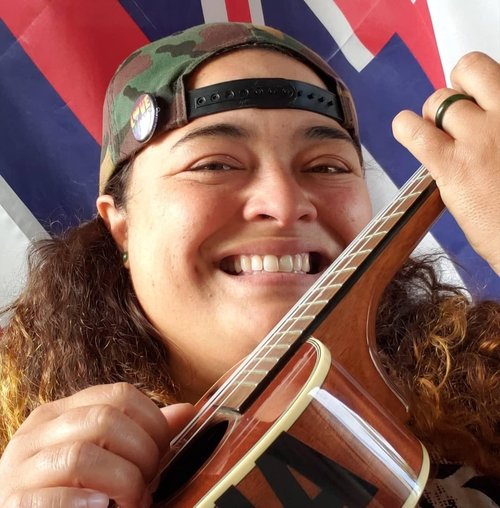
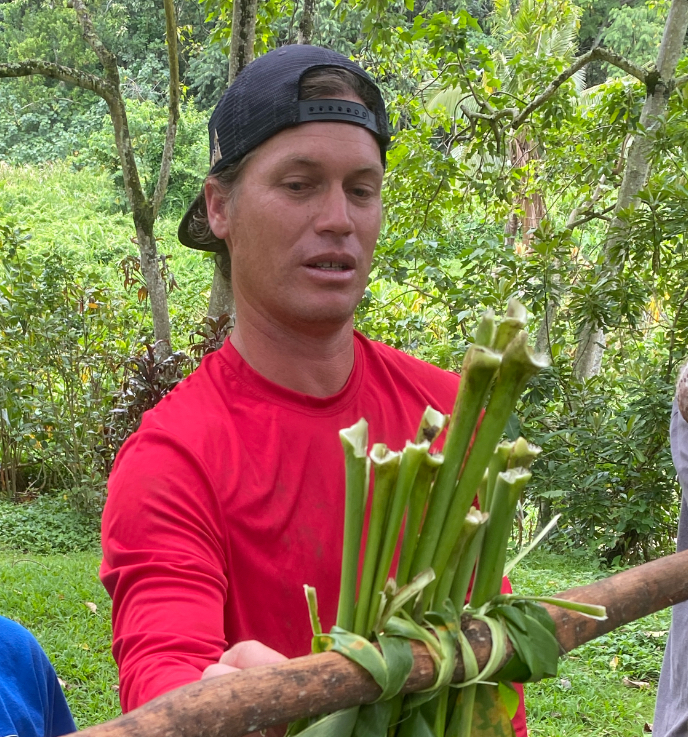
Born and raised in Kailua, Keahi was first introduced to the fishpond in 2011 with UH-Manoa’s Malama Loko I’a class. He was an intern from January to May 2012 and then joined the Kū Hou Kuapā in June 2012. Keahi graduated from Kamehameha-Kapalama in 2006 and attended Santa Barbara City College before transferring to UH-Manoā. Keahi enjoys playing music and gigs throughout the state with The Vitals. Keahi started working at Paepae O Heeia is 2012 and over the last 5 years over seen the restoration at Heeia Fishpond. In 2017 started farming Kalo in Luluku which he still cares for with his Ohana.
Professional Development with Tiana Henderson
Participated in a 3-day immersive online course with Tiana Henderson, CEO of indi-geinUS mind(s) LLC, who led the Kūkulu Hale Professional Development Program. This program, designed for cultural practitioners, traditional knowledge holders, and ‘āina-based educators, aims to empower those deeply rooted in Hawaiian culture and traditions. Tiana provided us with interactive sessions, hands-on workshops, community building, and opportunities for knowledge exchange, equipping us with the skills and knowledge needed to preserve, protect, and promote Kūkulu Hale. Mahalo, Tiana, for helping us embrace the indigenous architecture and engineering practices of Hawai’i.

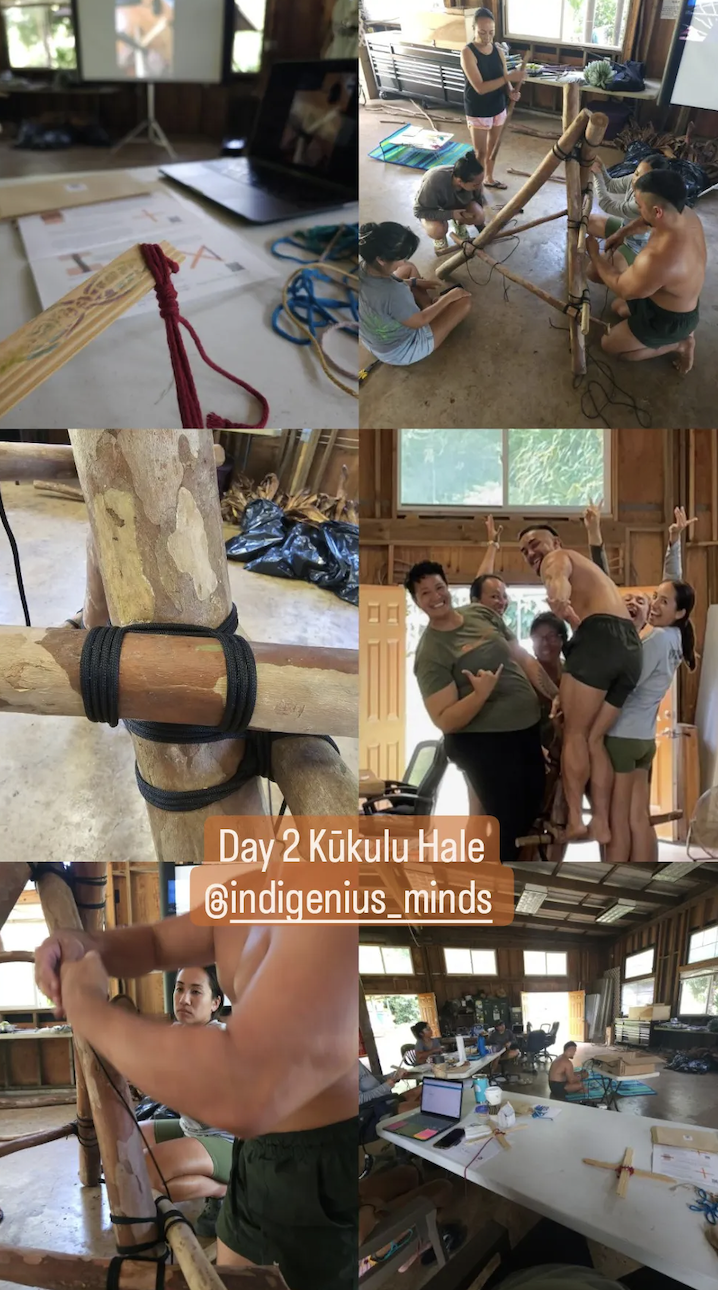
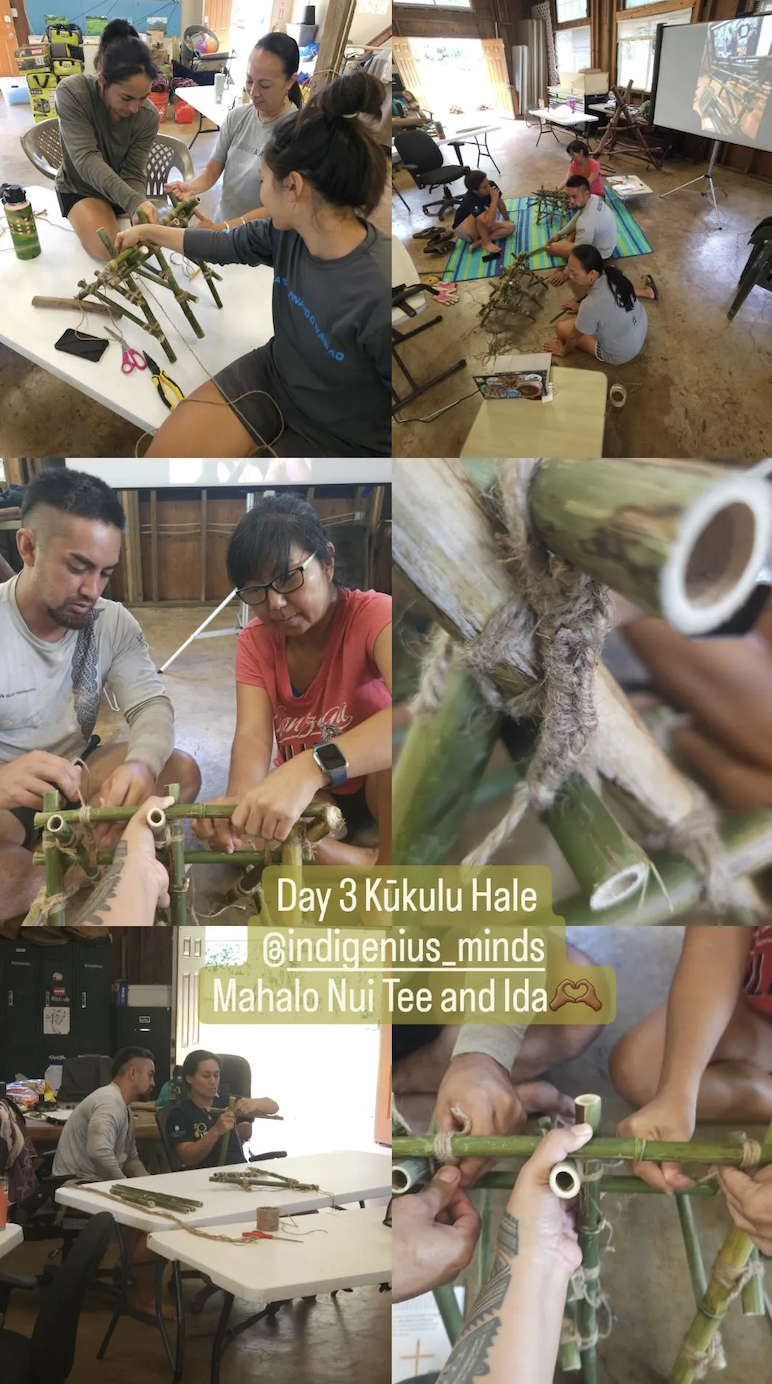
Professional Development with Keahi Piʻiohiʻa
Under the guidance of Keahi Pi’iohi’a, we collectively learn the protocols, methods, and skills of both ancestral and modern practices essential for constructing our hale in Waipao. This involves foundational elements like wells/footings that support the kumu pohaku (rock base for posts), pou kihi (corner posts), pou kaha (wall posts), and pou manu (middle posts). Each post is meticulously carved with an ule, ʻauwaha/auwai, and kua. The scaffolding, known as ʻolokeʻa, is meticulously lashed using the upaʻa lashing style, demonstrating the integration of traditional techniques with contemporary construction methods.
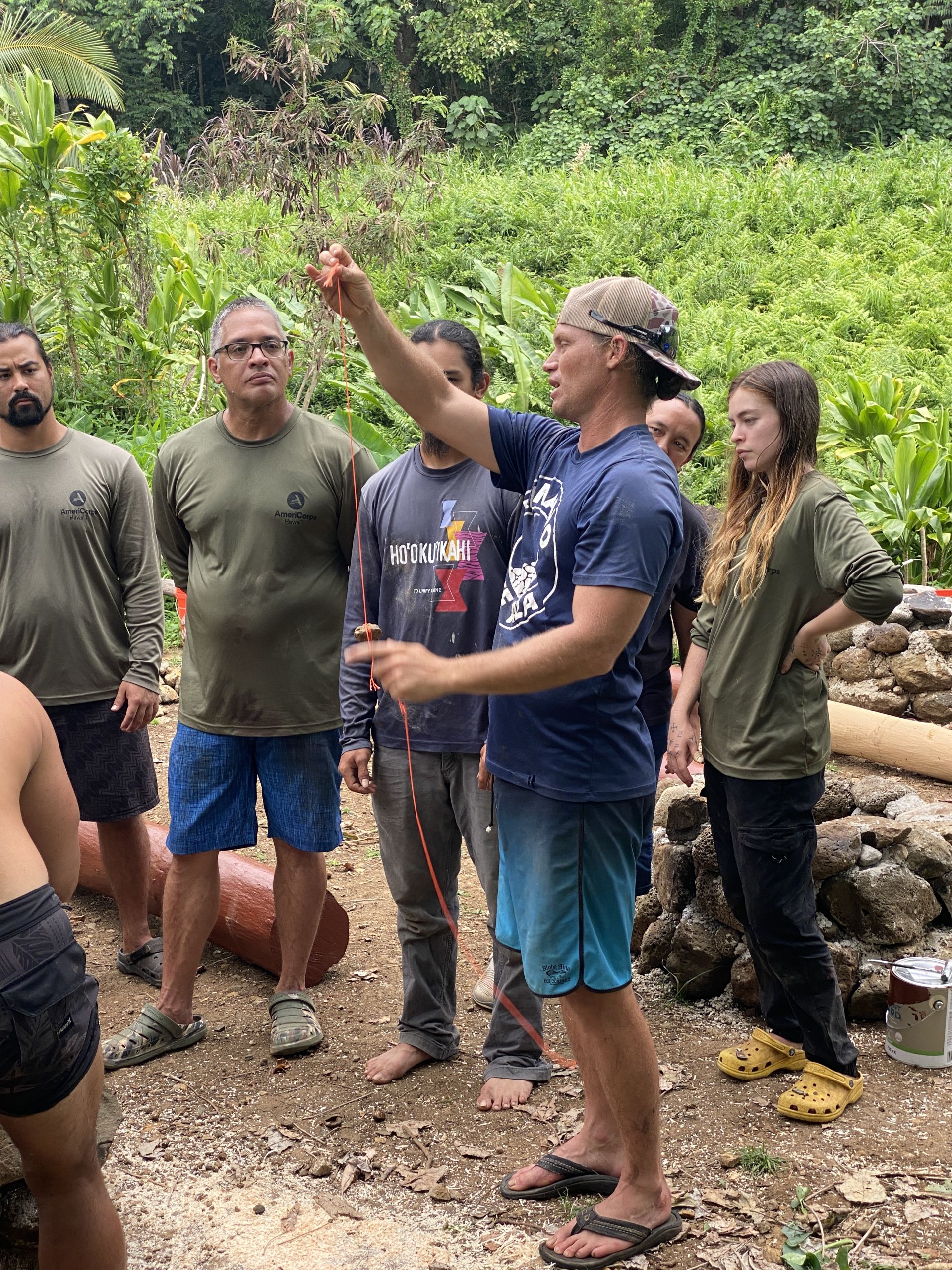
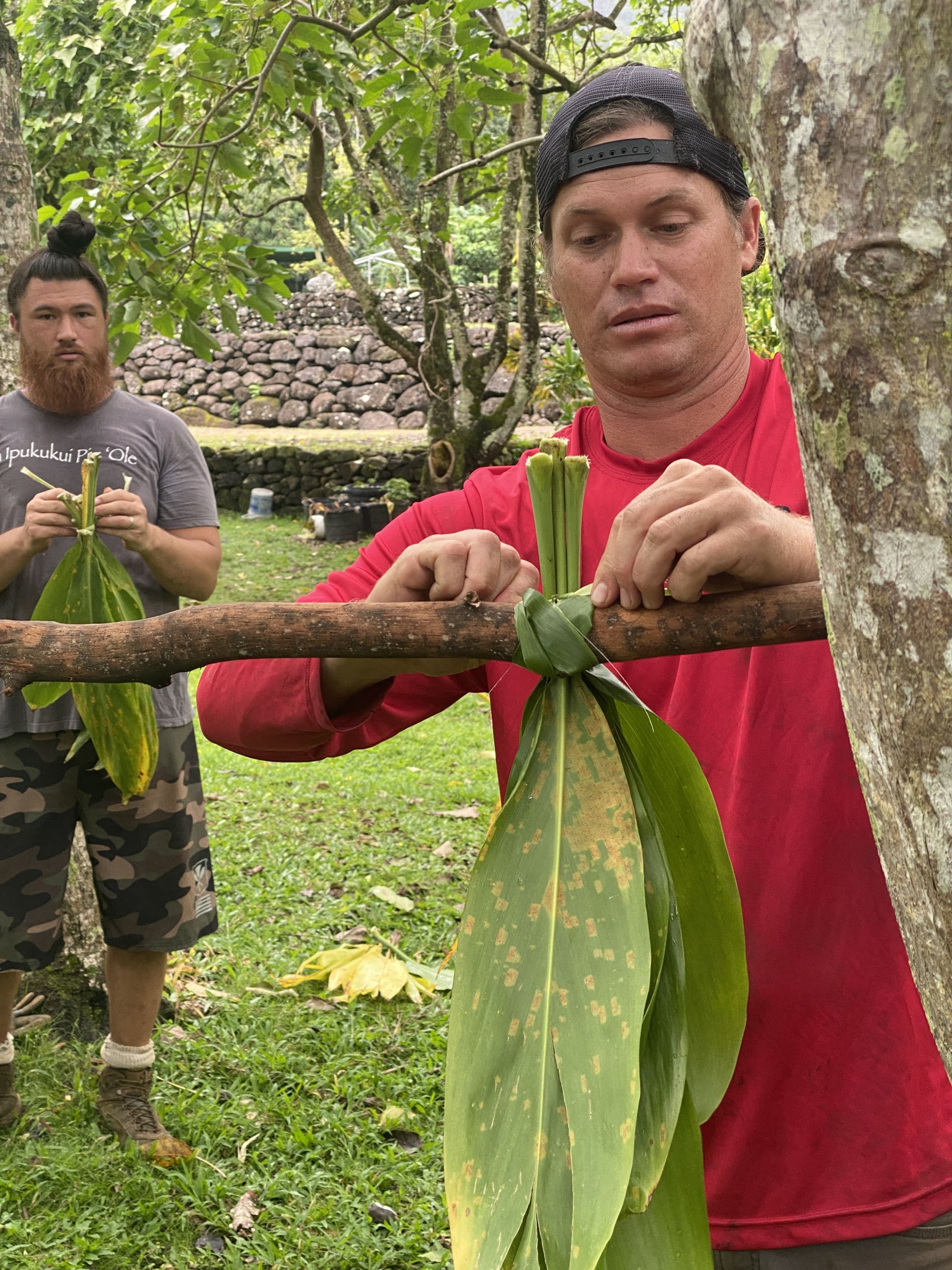
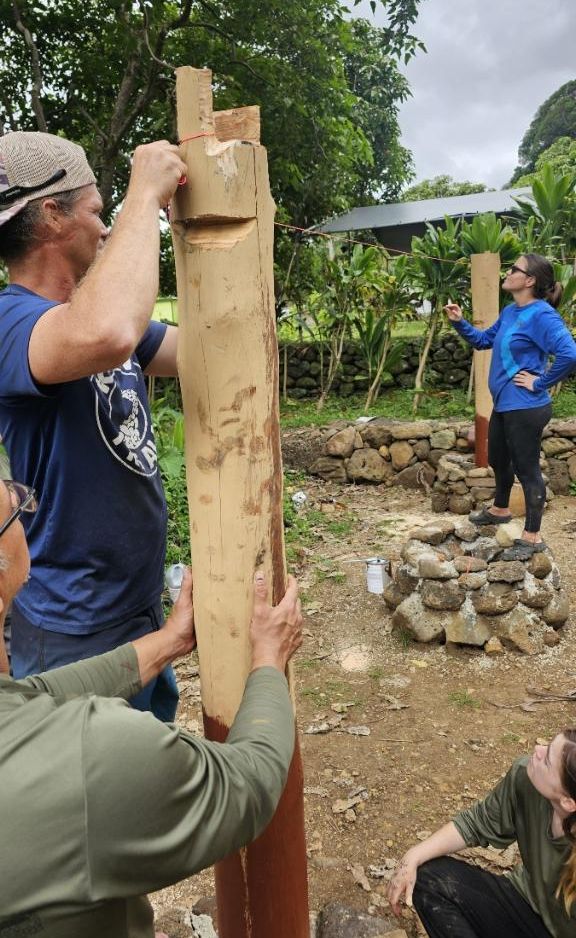
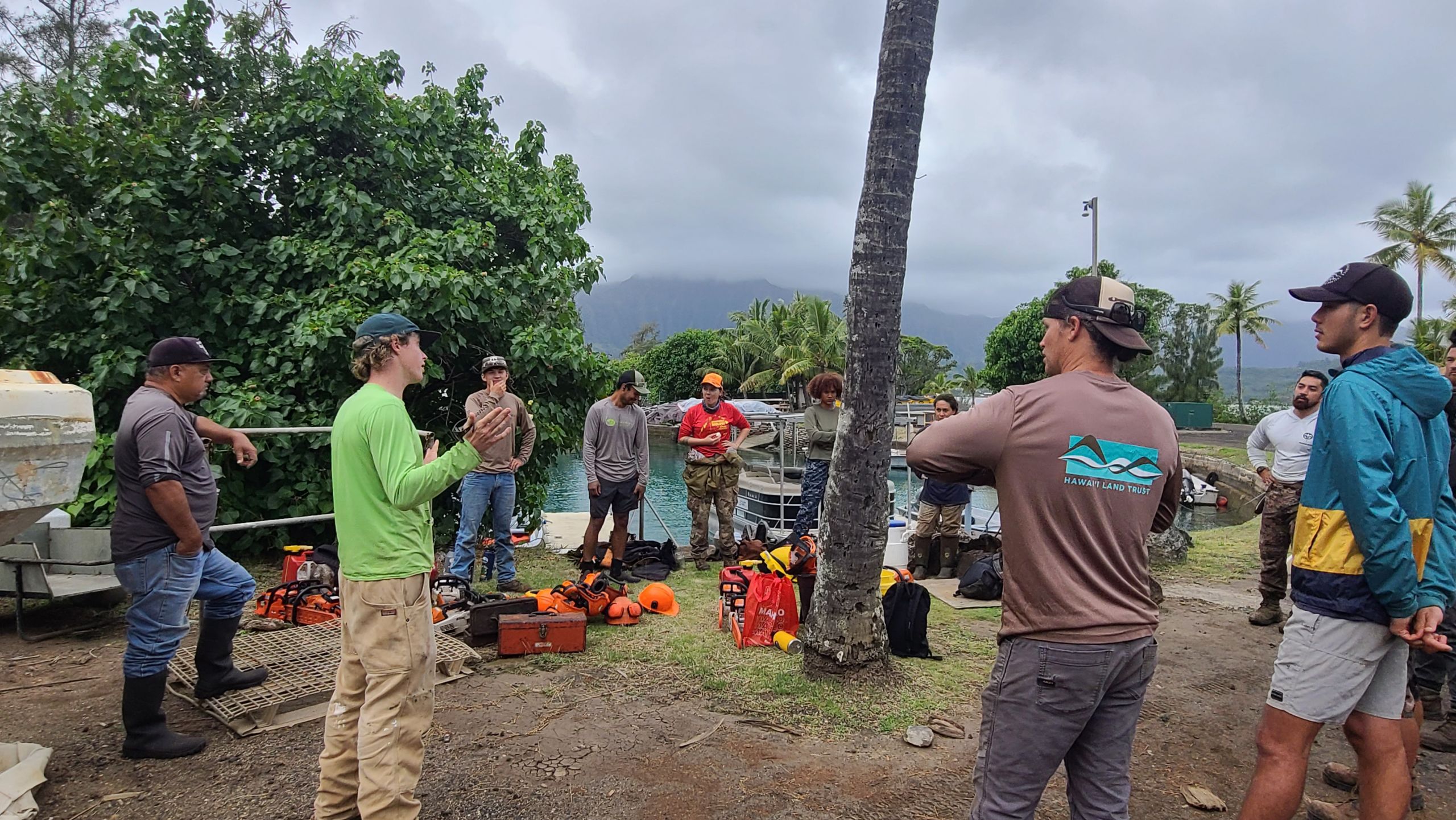
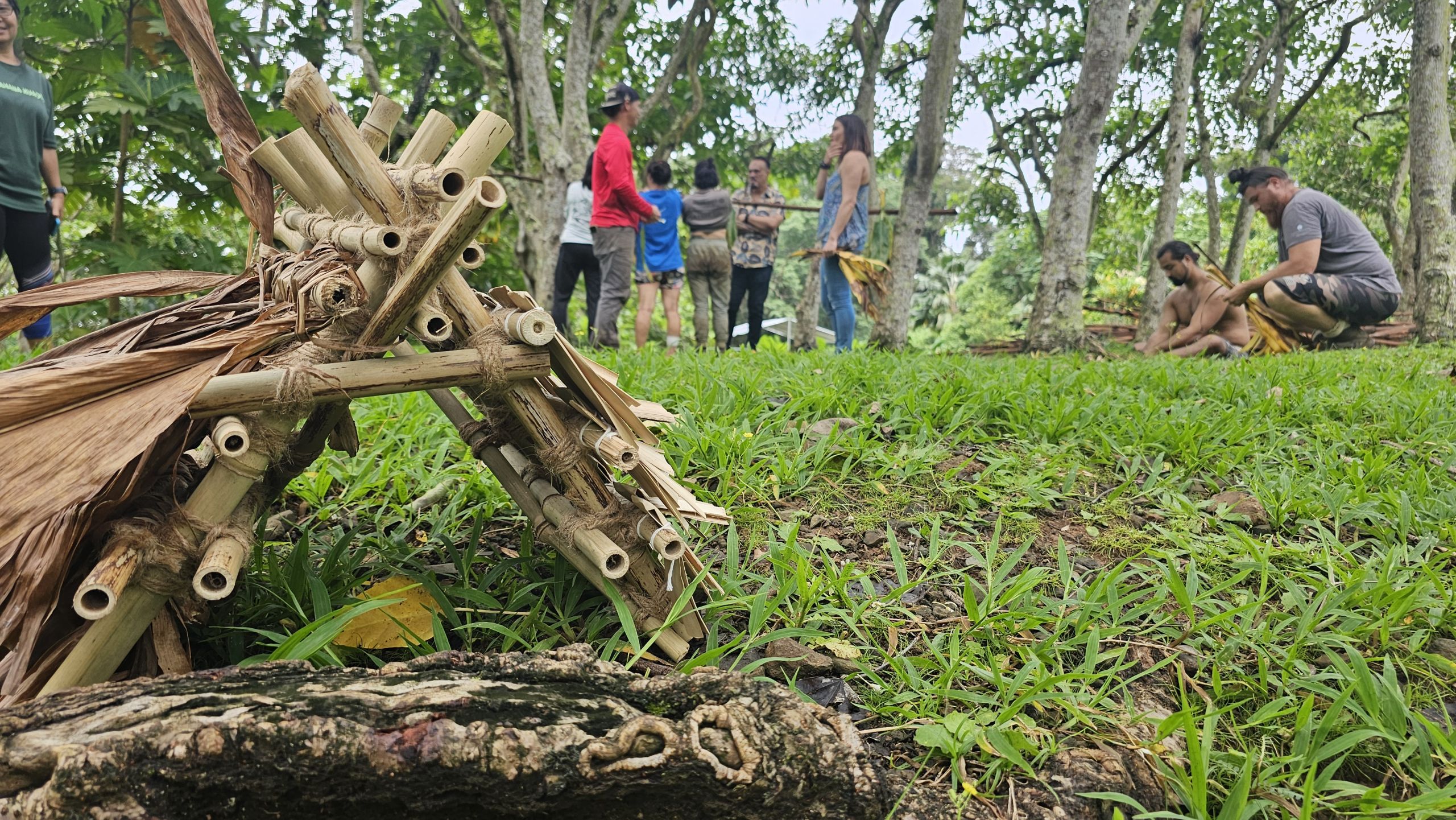



Blessing and Placing pou
On June 5, 2024 we had a ceremony for the placement of the pou, or posts, which are foundational elements of our hale structure. Keahi introduces us to these rituals, which include chants, prayers, and ceremonies seeking blessings for the protection, prosperity, and harmony of both the hale and its community. Beyond its functional aspects, the ceremony acts as a communal event that enhances cultural identity, fosters relationships, and upholds Hawaiian traditions. It underscores spiritual ties to the land and ancestors, safeguarding traditional craftsmanship and knowledge for future generations.
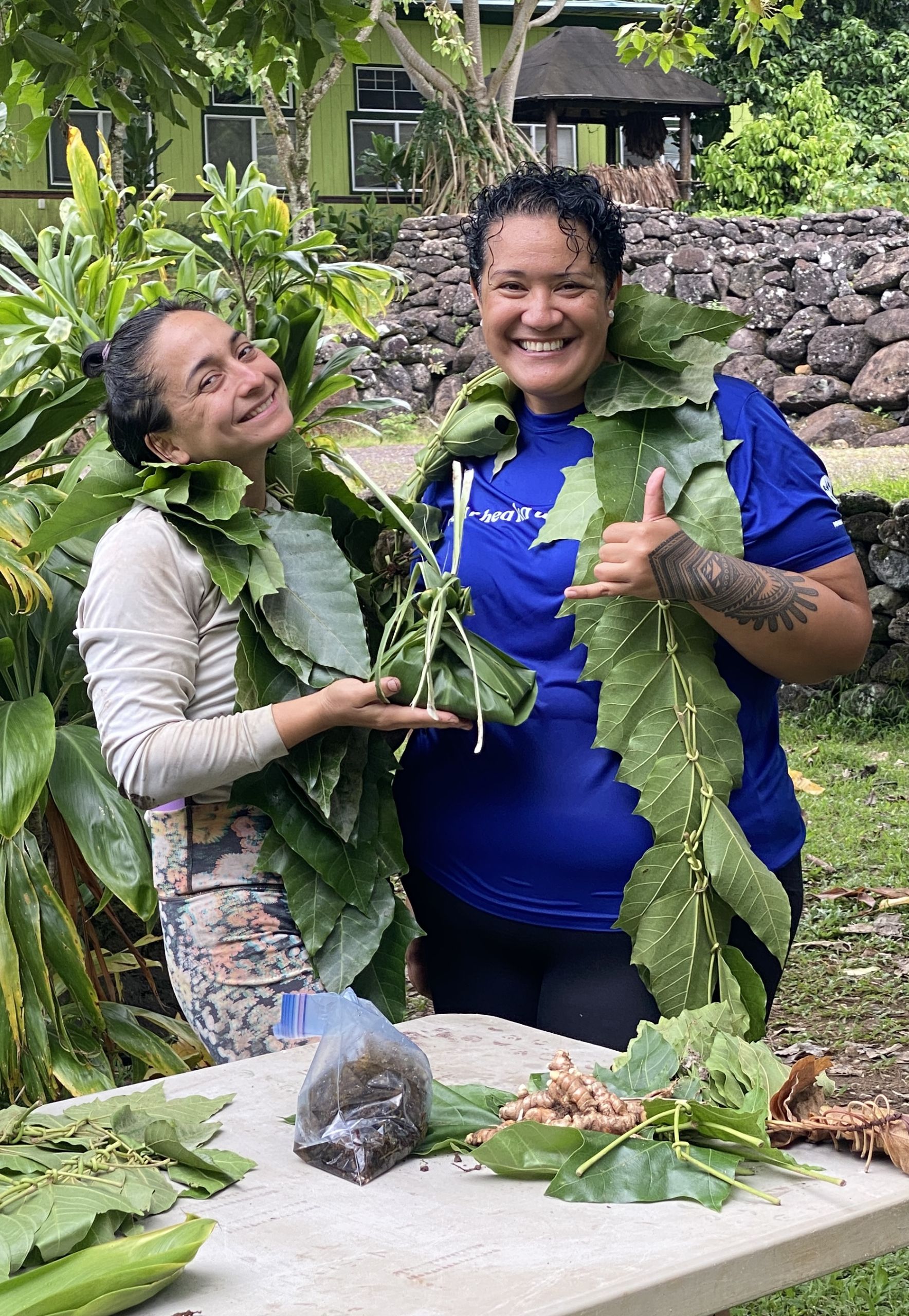
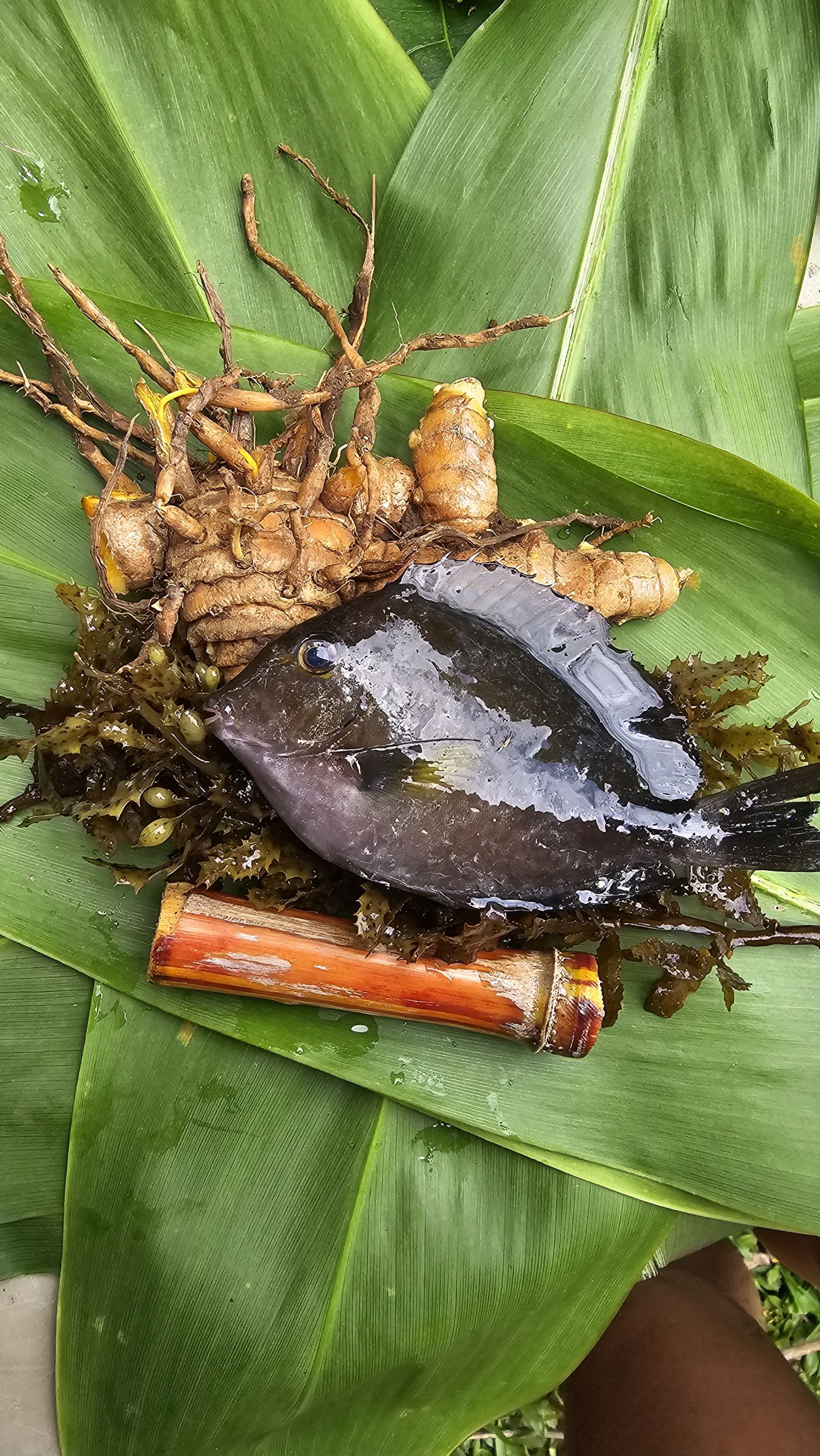
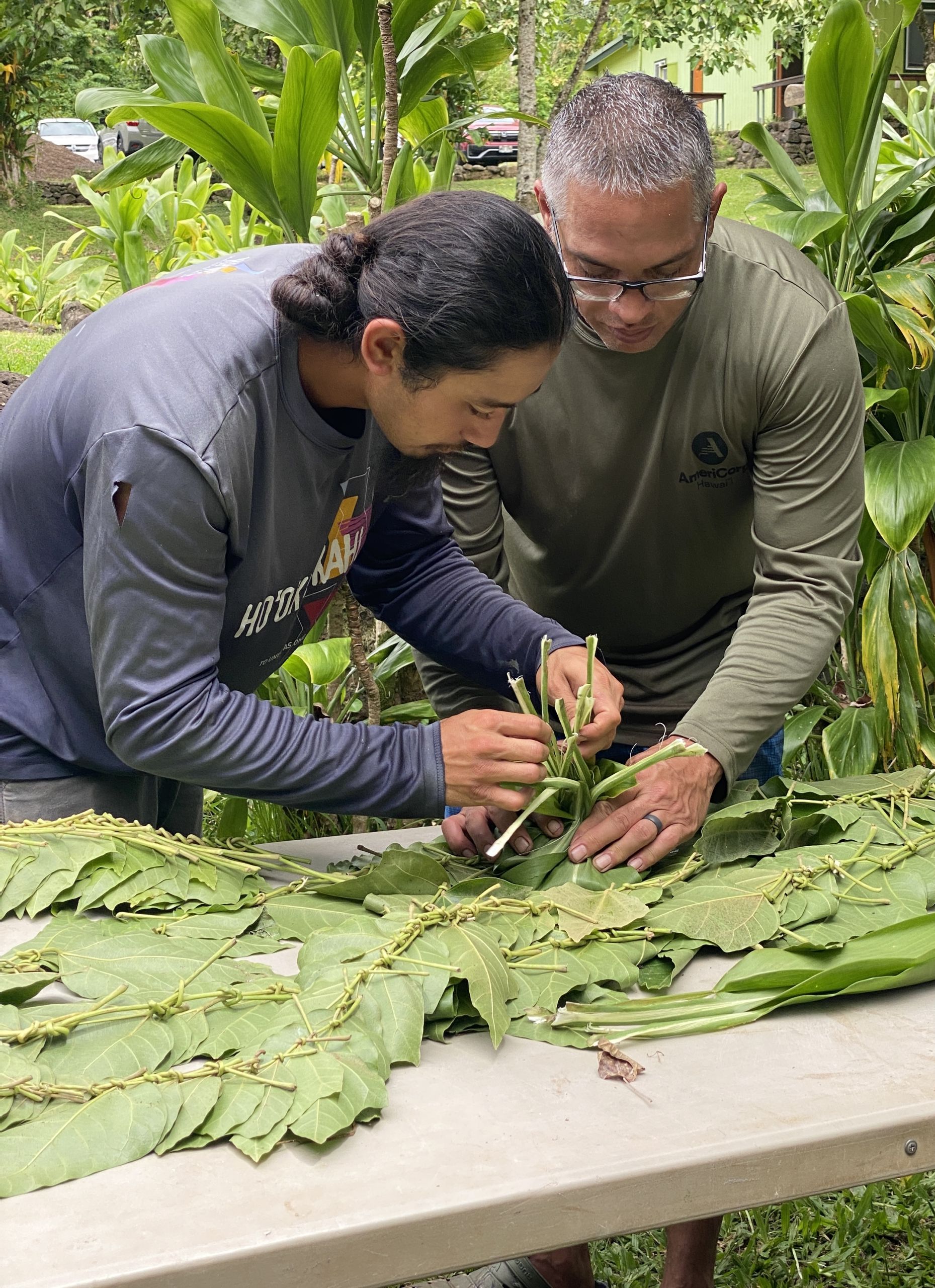

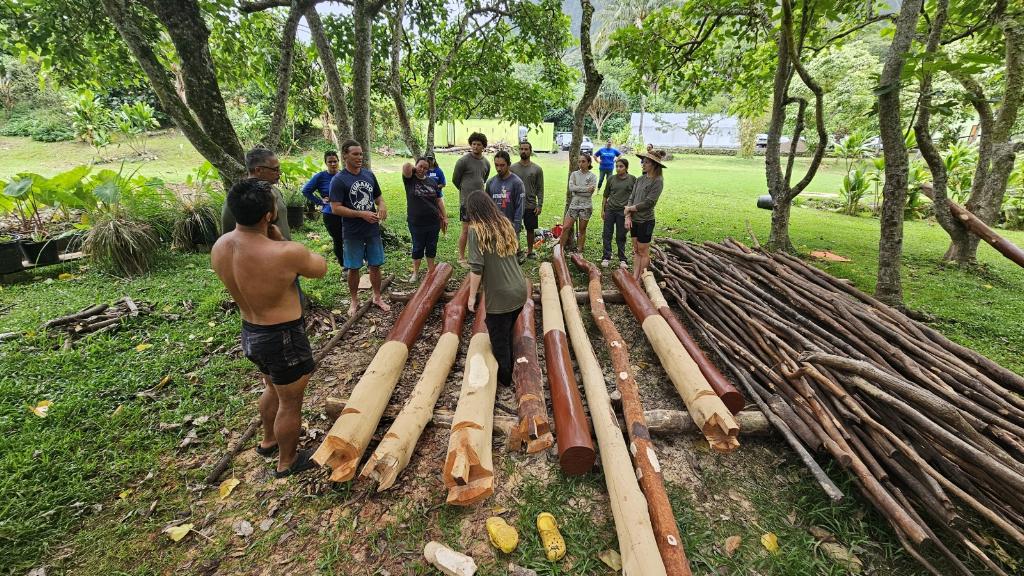
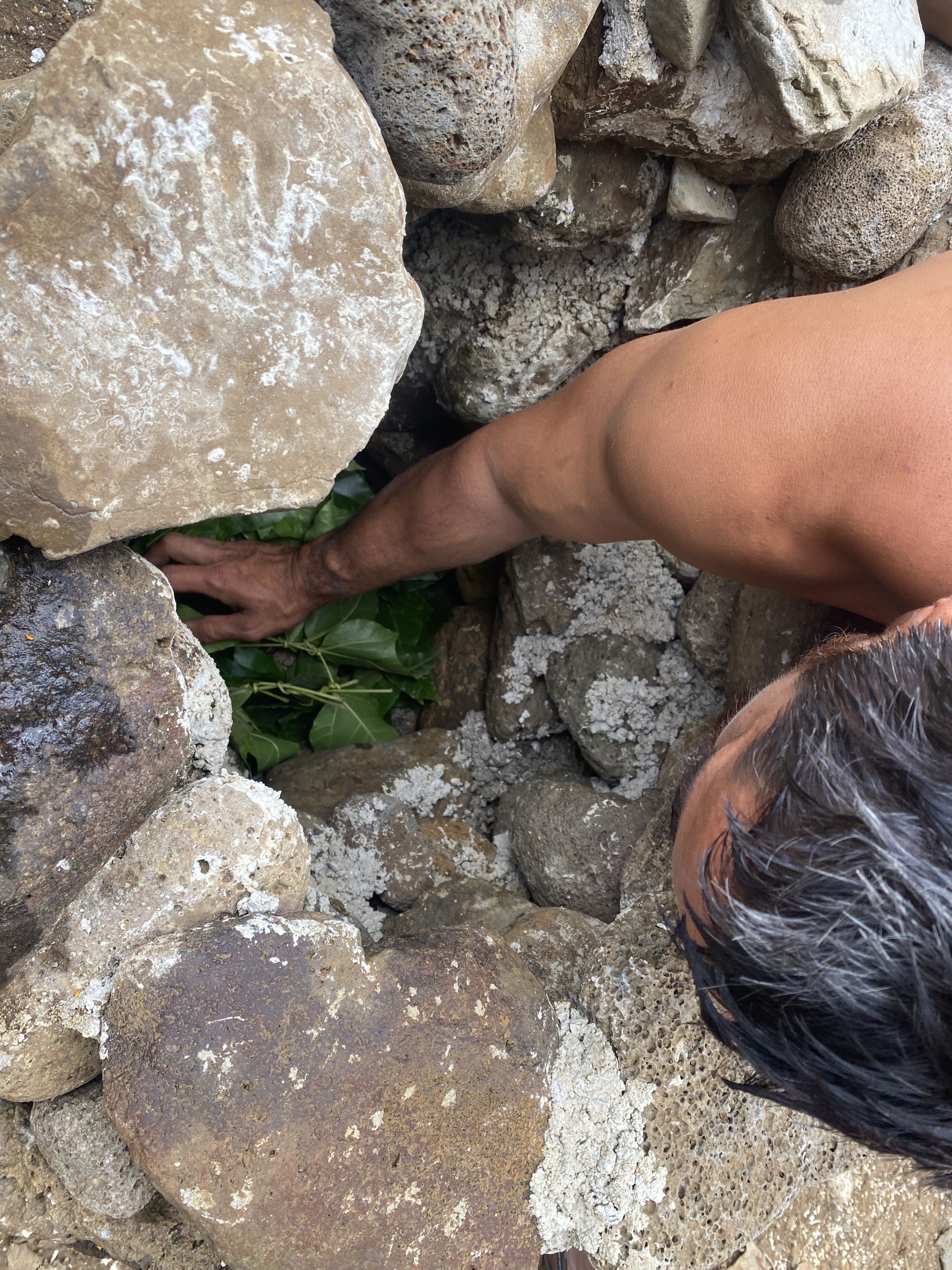
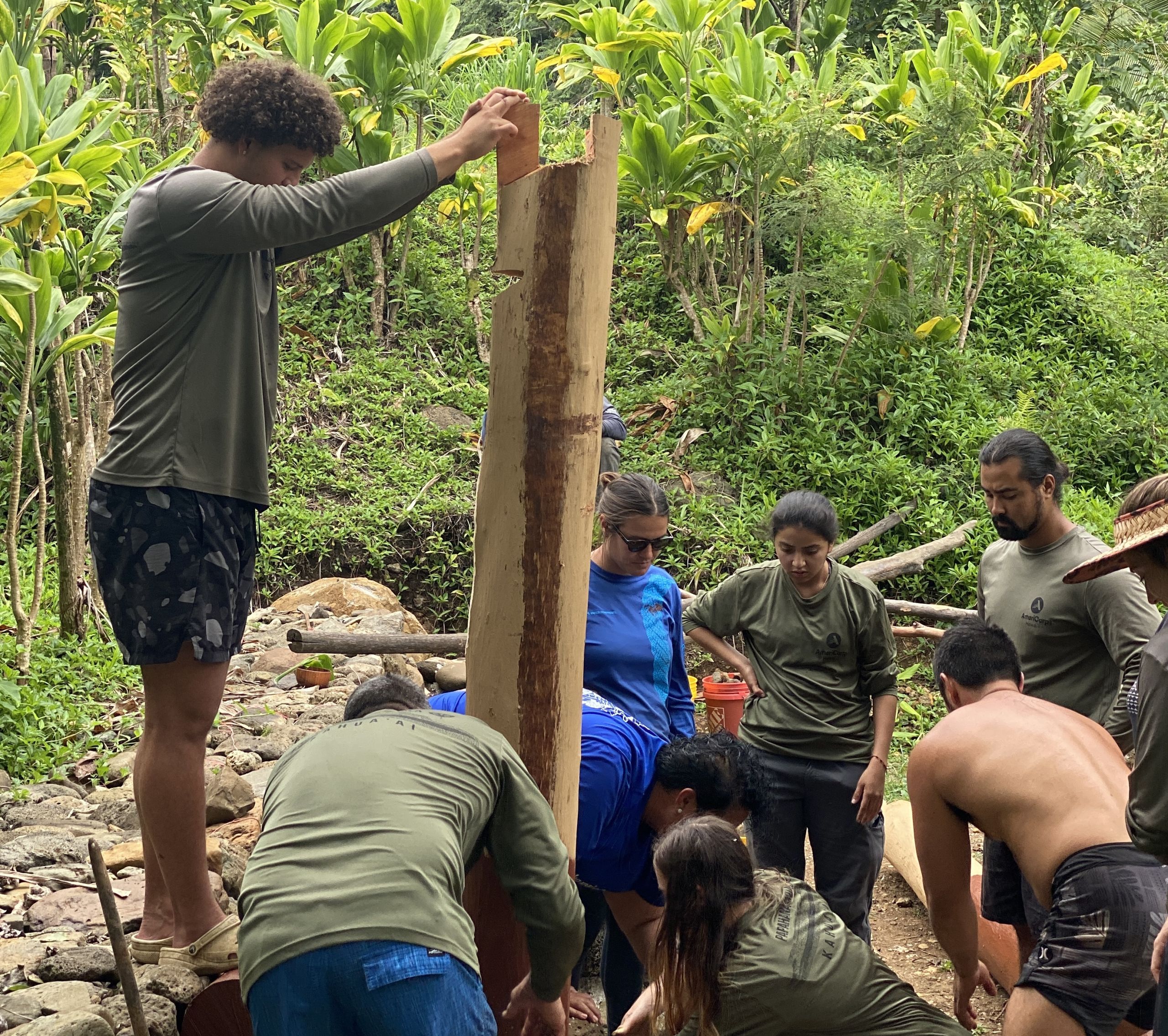
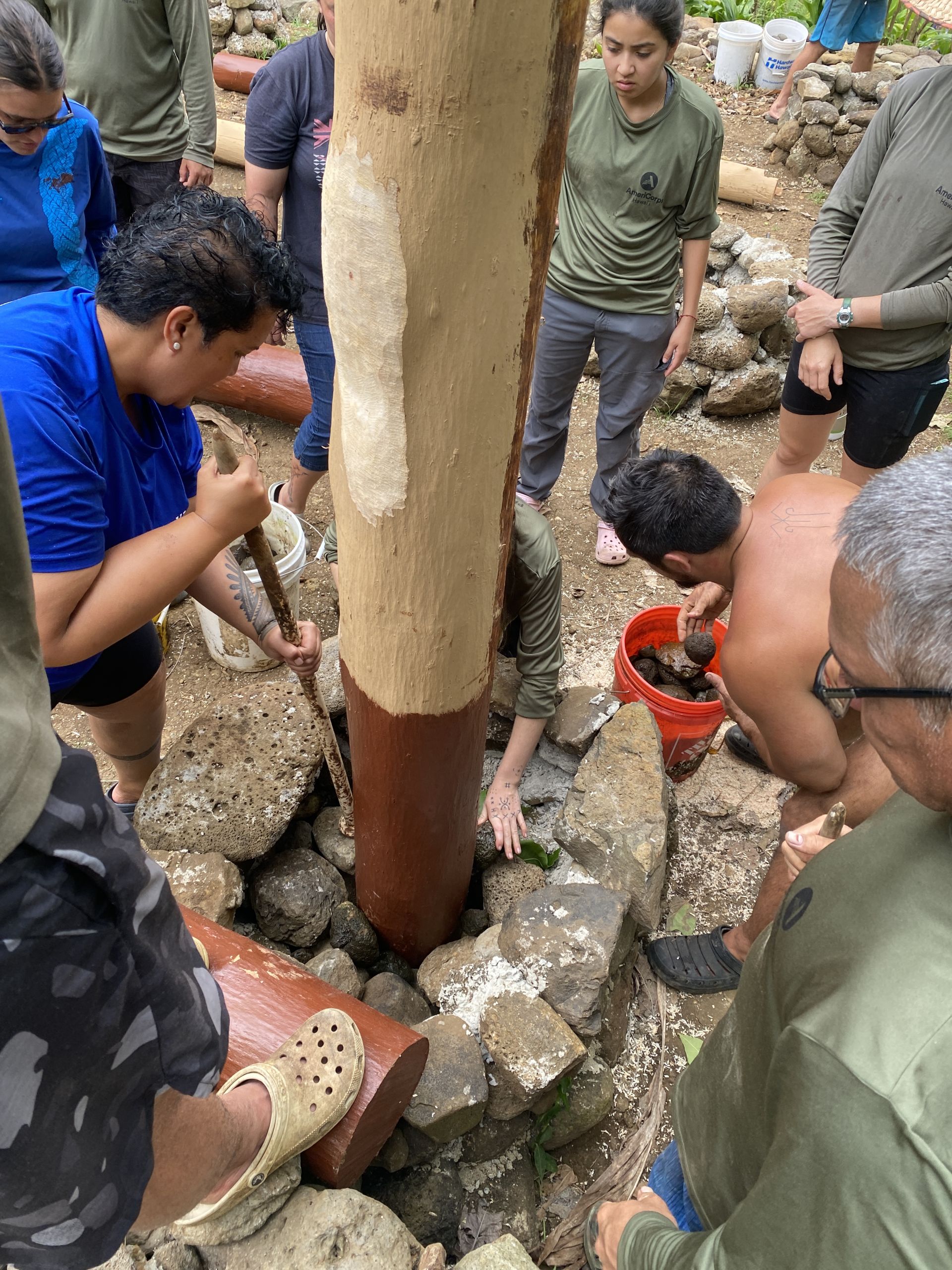
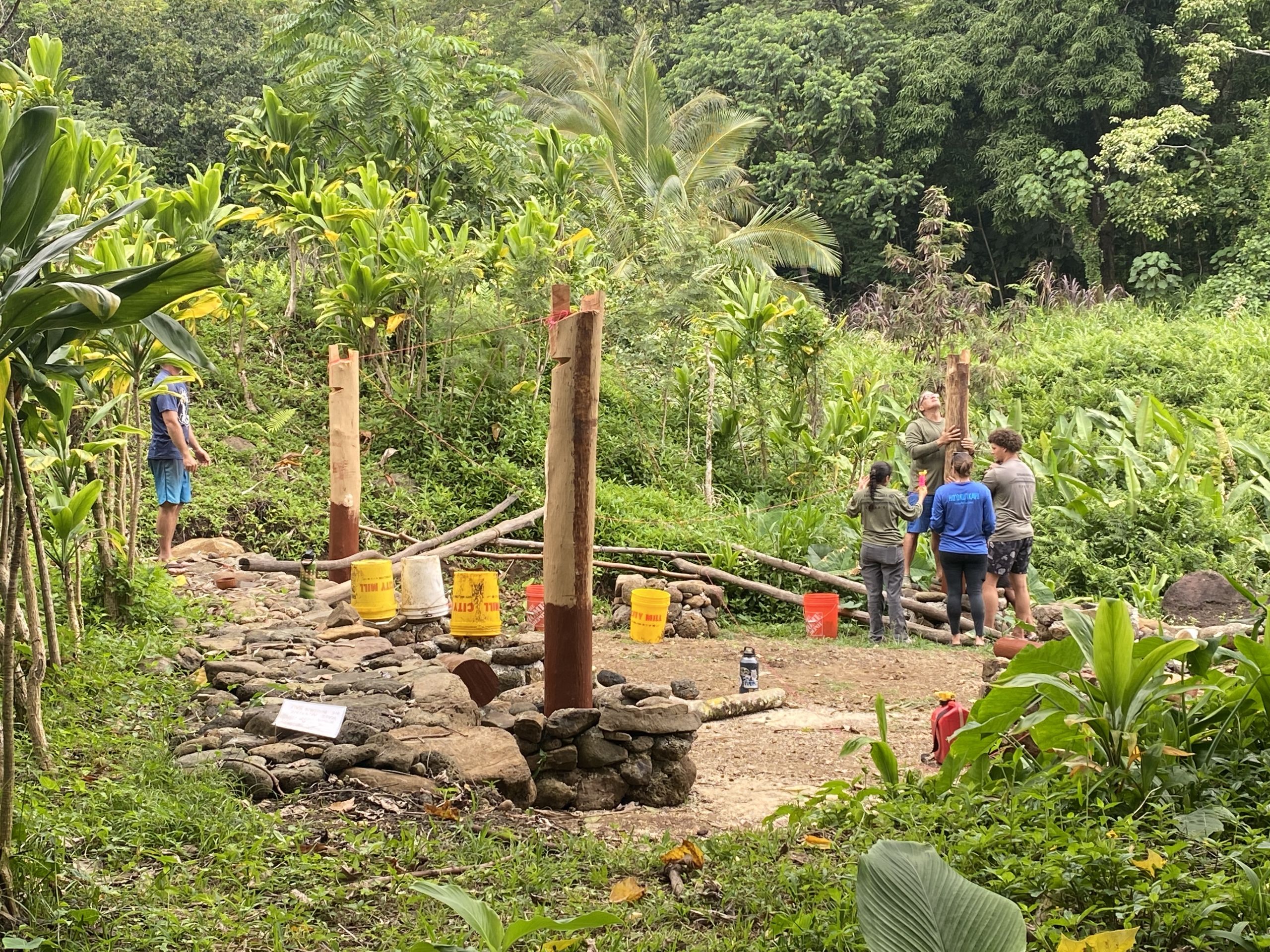
School Programs
Lelekamanu functions as our outreach and service project division on Oʻahu, extending exclusive educational opportunities to participating schools through invitation. These include field trips to terrestrial conservation areas and active restoration sites, partnering with other community organizations on mālama ʻāina-based initiatives, and participating in native vegetation restoration projects in Waipao. We aim to extend the teachings of Papahana Kuaola with the wider community, highlighting the deep connection between cultural heritage and ecological vitality. Our goal is to secure the lasting legacy the unique identity of Hawaiʻi for both the present and future generations.
Our Lelekamanu School program offers a 90-minute interactive presentation on Human Interaction with the Hawaiian Environment I (pre–1778), covering changes in population, settlement, government, religion, and food production from the first Polynesian settlers until 1778. Students then explore Waipao in He‘eia ma uka, engaging in mālama ‘āina activities, learning cultural skills, delving into Hawaiian mo‘olelo, and gaining insights into the history, traditions, and art of kūkulu hale.

Participants walk to the hillside of Waipao for a live museum experience, immersing themselves in the history of both old and modern Hawaiʻi. They explore the process and resources used to build a hale, starting with the traditional Hawaiian uhau humu pōhaku foundation, involving dry stacking and weaving rocks. They learn about the accessibility of various native and nonnative plants and the importance of preserving native species while repurposing nonnative ones.
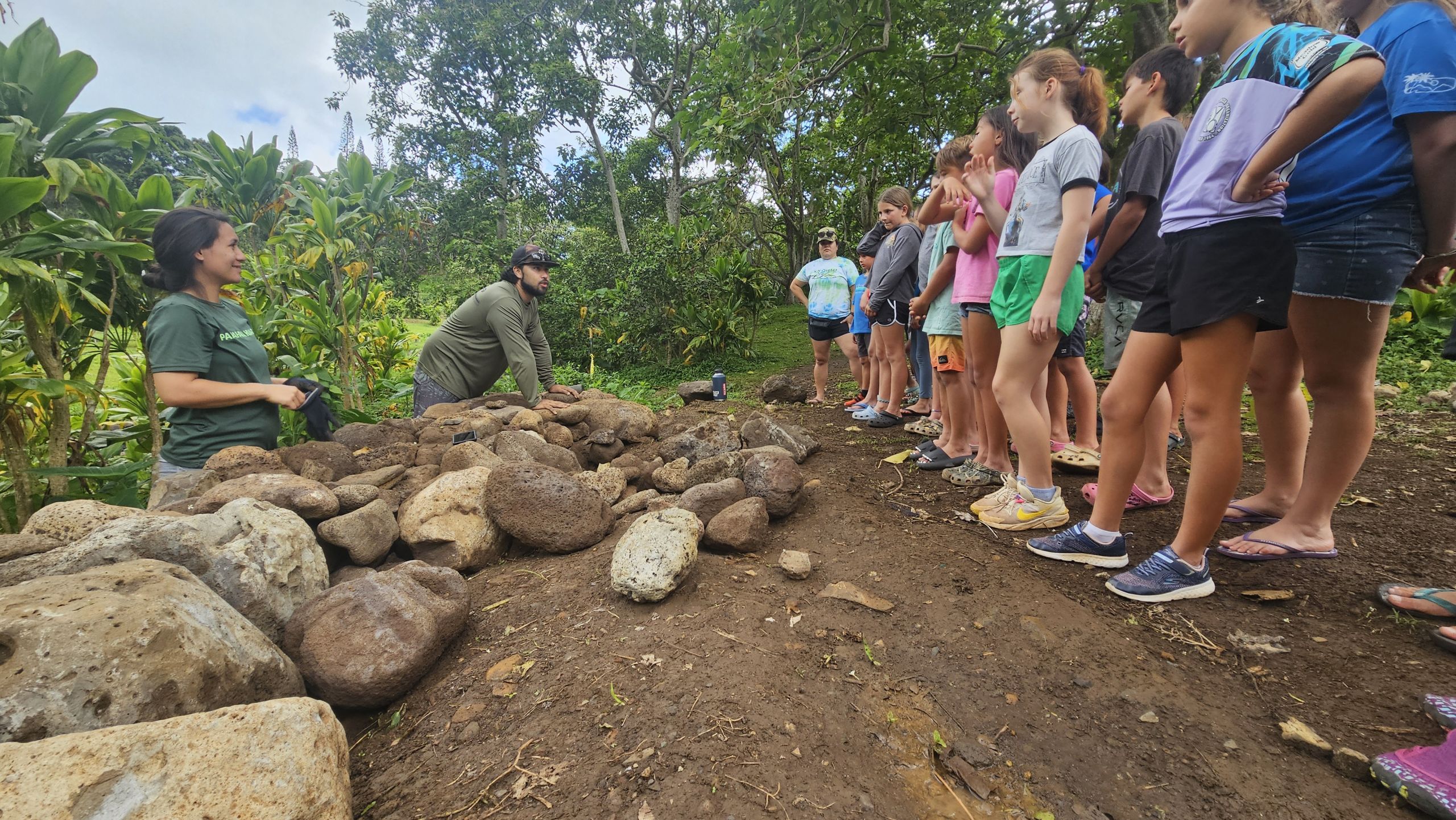

Engaging in hands-on activities, they collect rocks for the foundation, debark logs and wood, make traditional cordage from coconut fibers, and learn cordage lashing techniques.


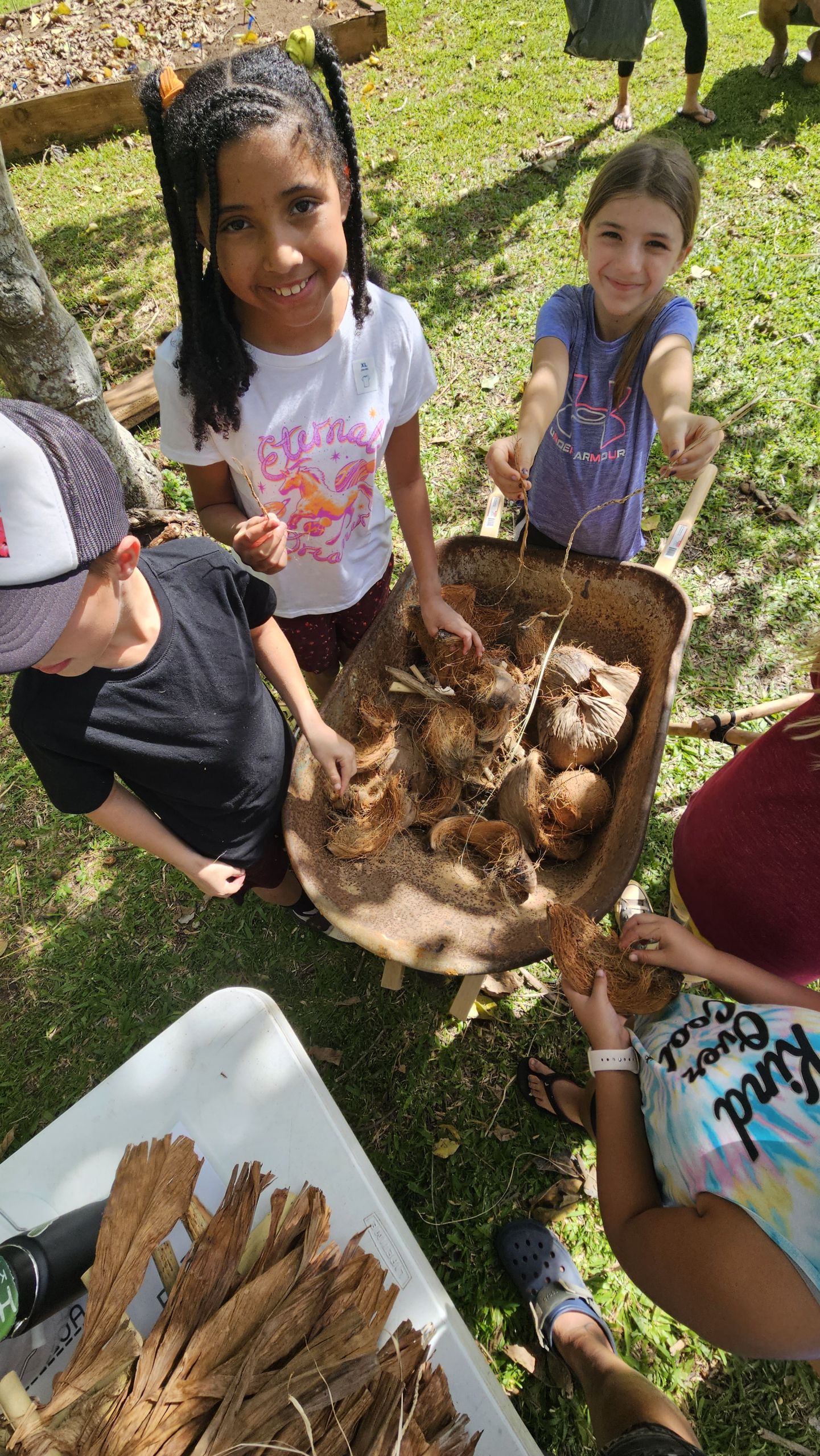
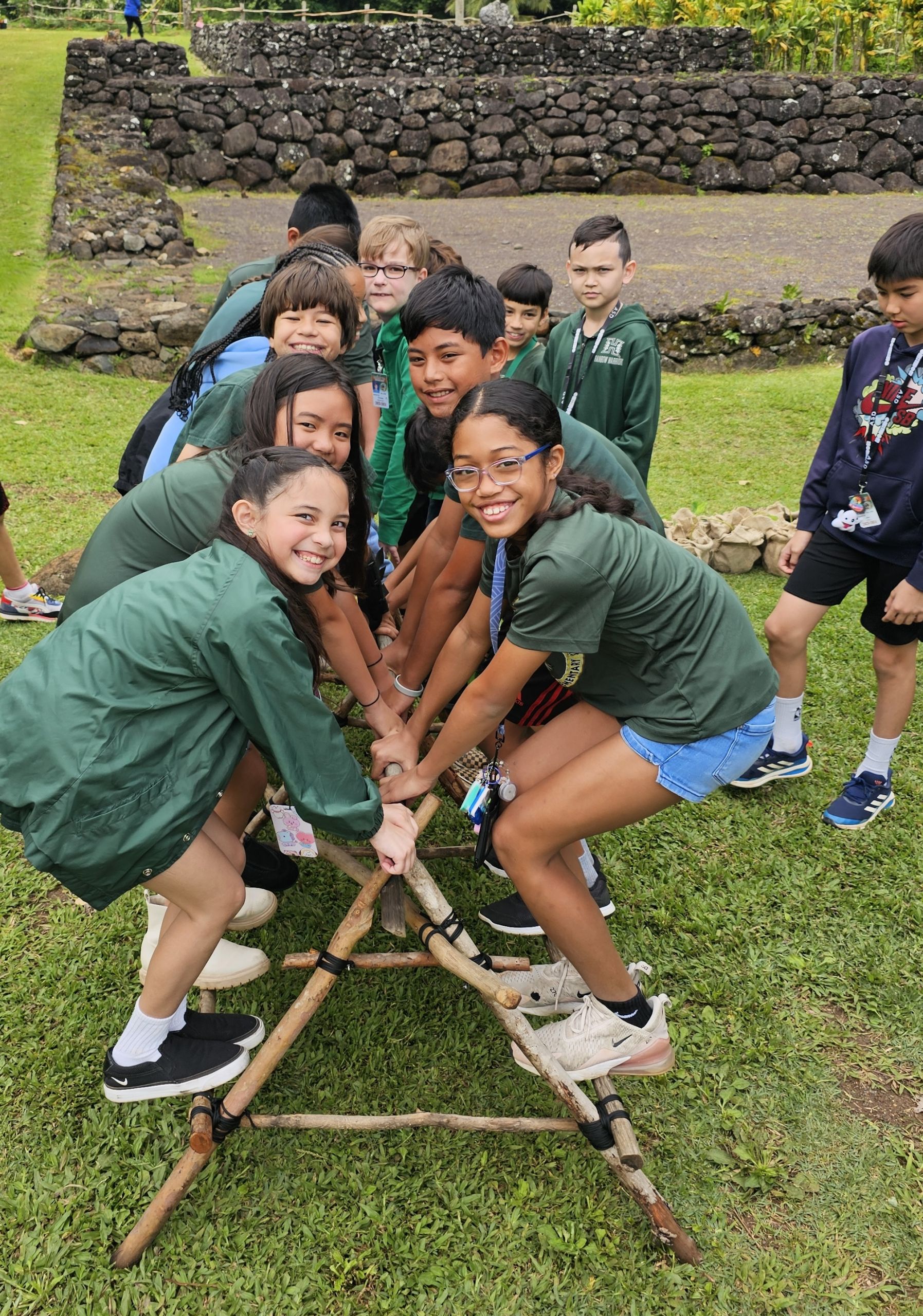
Students had the opportunity to broaden their knowledge and become familiar with indigenous Hawaiian architecture. Each student received the INDI-GENIUS MINDS Hale Folded Kit to help them understand the components of a hale.

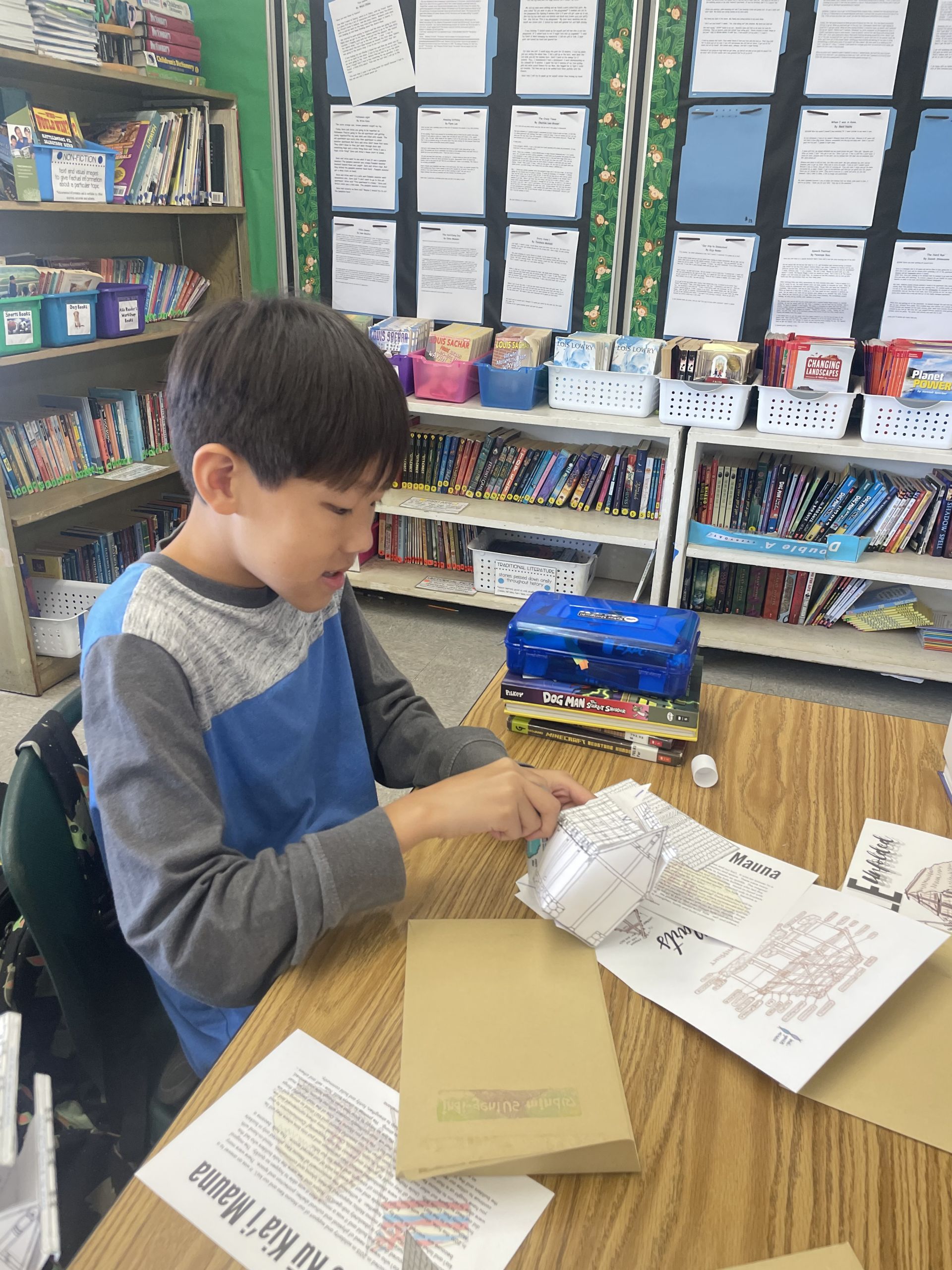
Kumu Steve DePonte shares, “Our students loved the outdoor experience and were able to connect their learning of the Ahupua’a to real world, hands-on learning during the service portion of the day. They loved getting their hands “dirty” while manipulating their tiny feet through the mud carefully to not disturb the keiki kalo. After returning to school, several students asked to edit their Ahupua’a posters to illustrate features of the environment in a more realistic fashion. Students were also provided with the opportunity to learn weaving fiber techniques, touch and feel ancient Hawaiian tools, and listen to ancient Hawaiian ‘oli.”
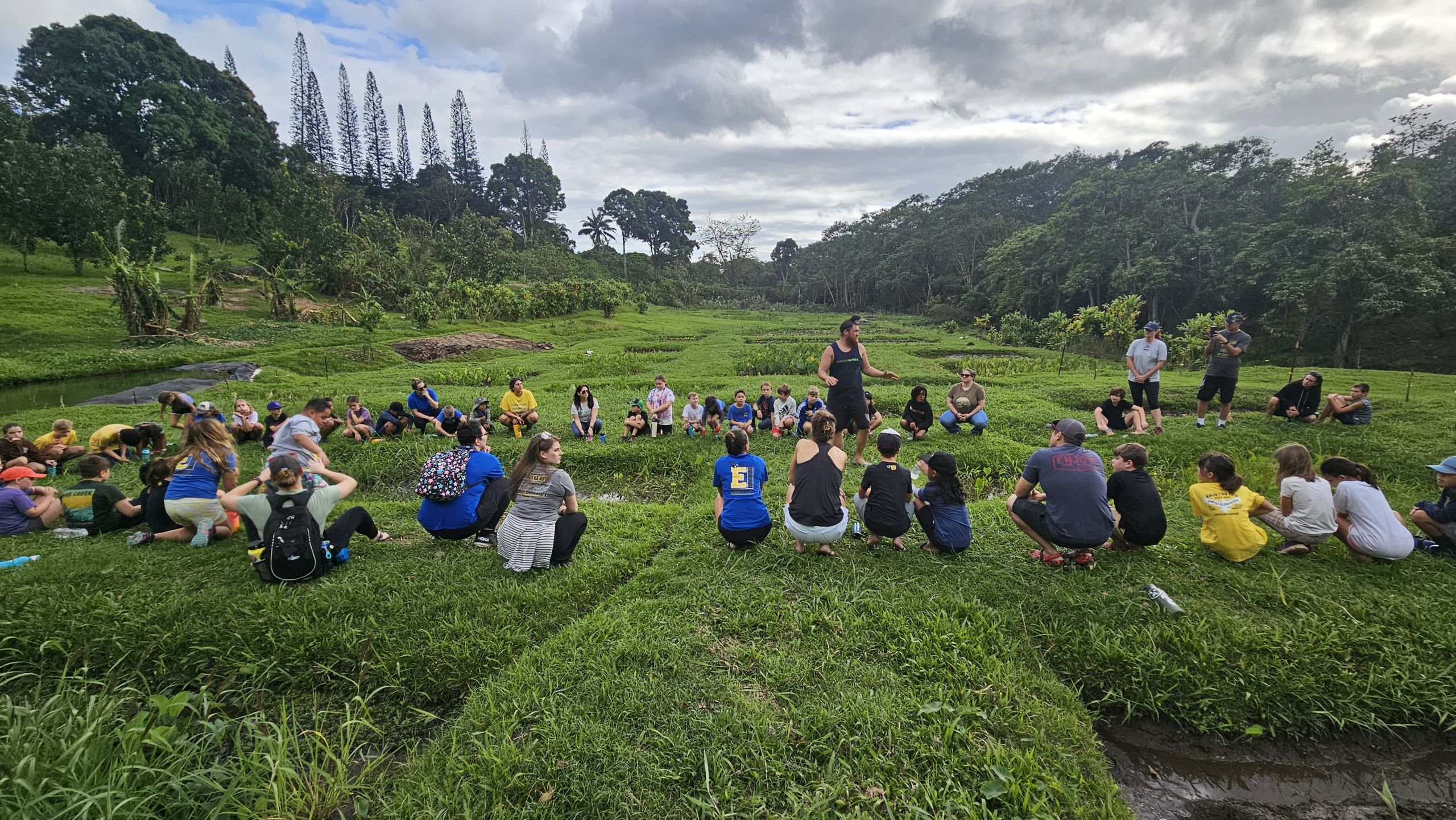
Community
Lā ʻohana work days provide our community with the opportunity to contribute to the care of Waipao, from our loʻi kalo to our kahawai, addressing various ʻāina needs. During these events, our community learns about the steps involved in our reconnection to indigenous Hawaiian architecture, including both traditional and modern methods of kūkulu hale.
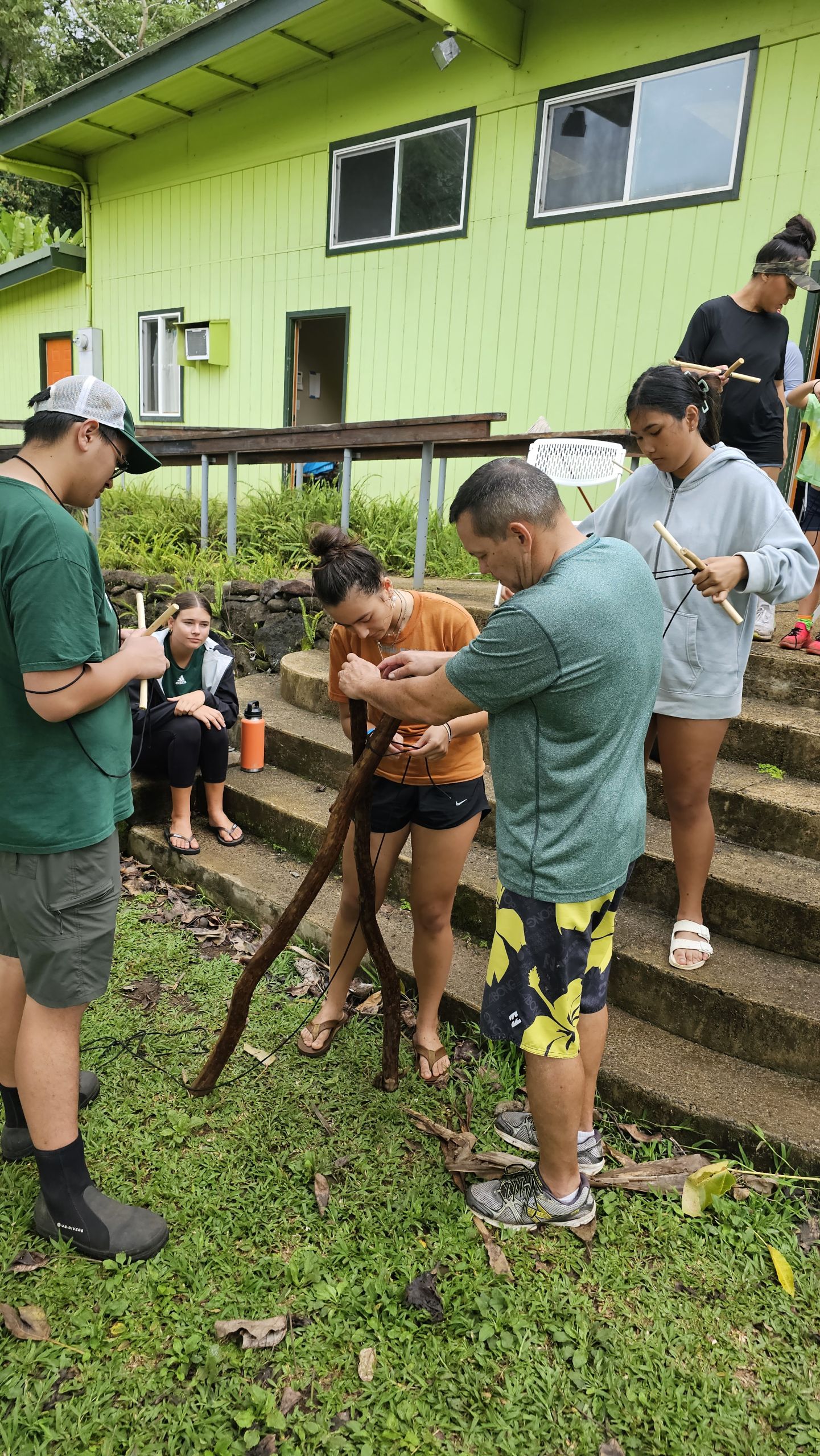
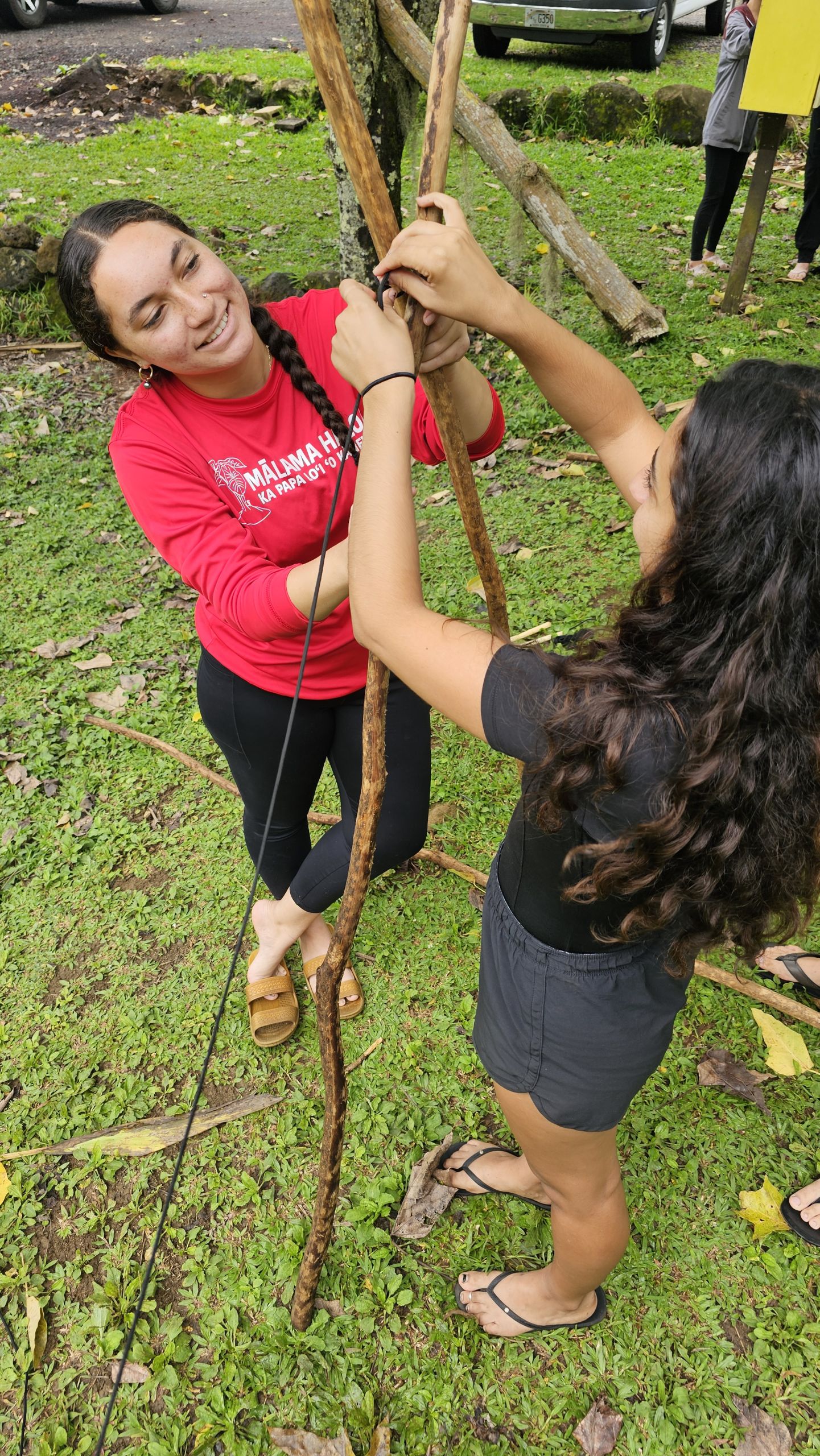
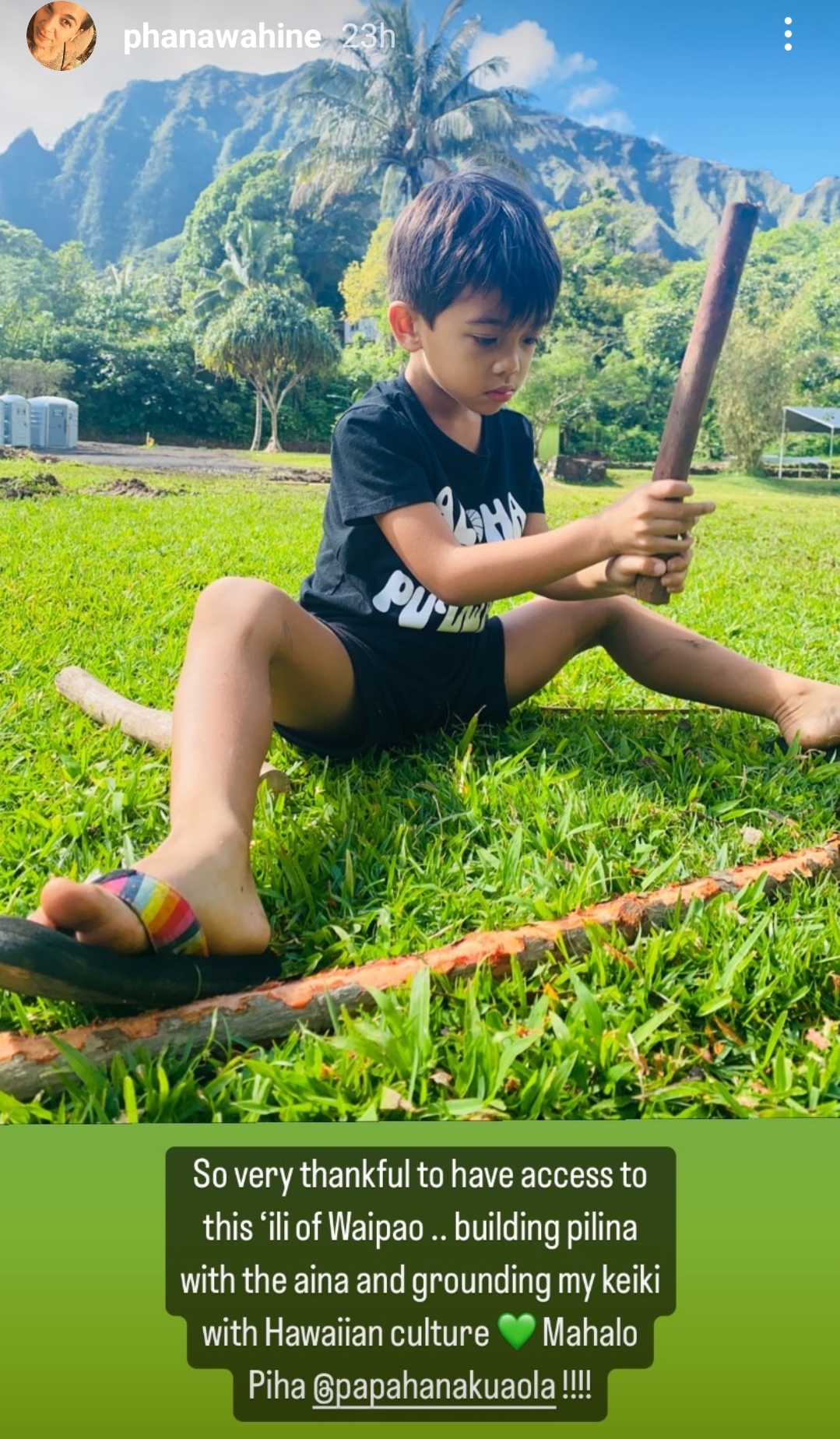
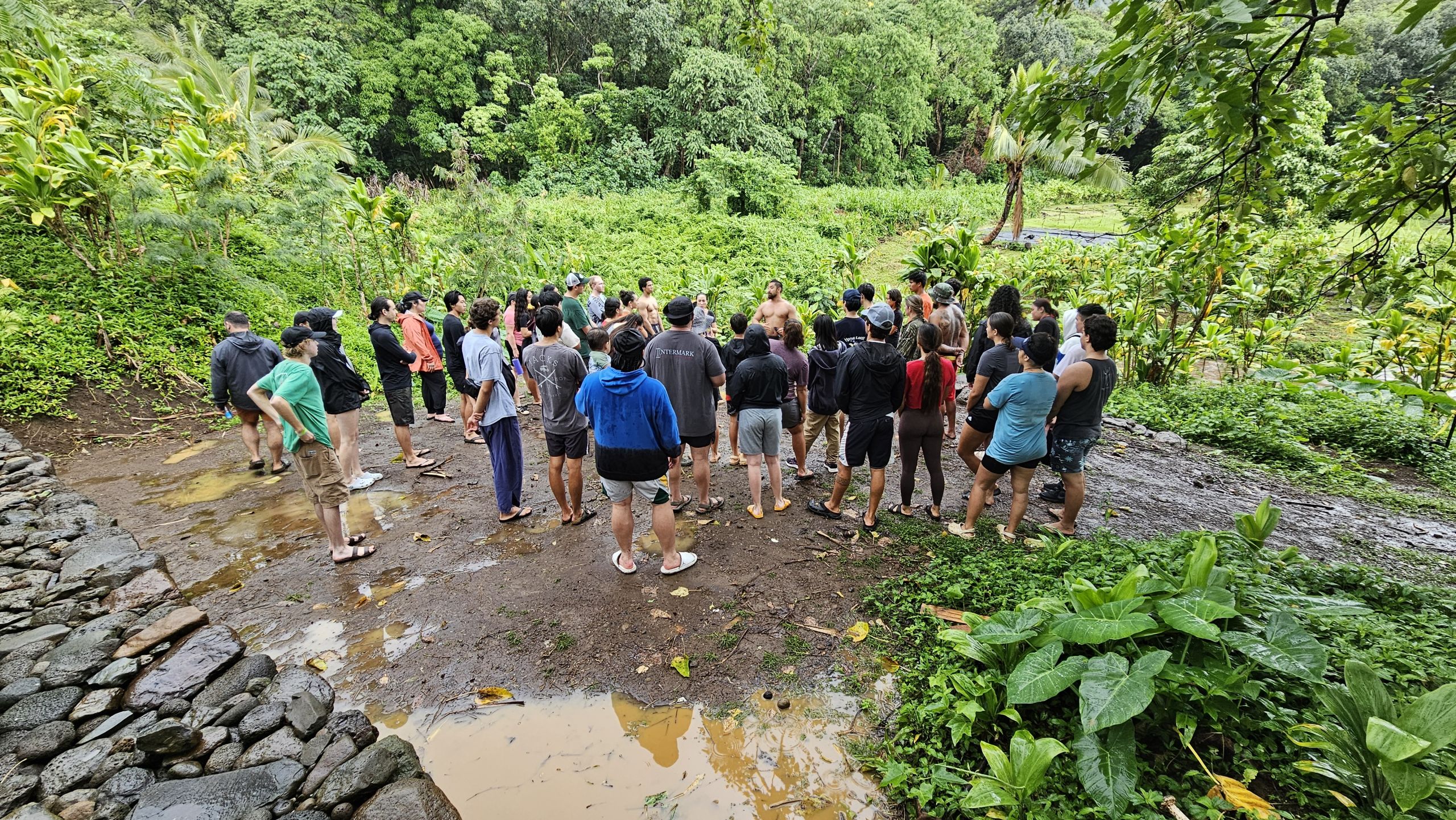
Partners and Community Contributors
AmeriCorps brings people together to tackle some of the county’s most pressing challenges through service all around the nation and volunteering. AmeriCorps members serve with organizations dedicated to the improvement of communities. We are uniting America by bringing people together to serve communities. AmeriCorps helps make service a cornerstone of our national culture. Through our nation’s most trying times, Americorps has come together to help those in need.

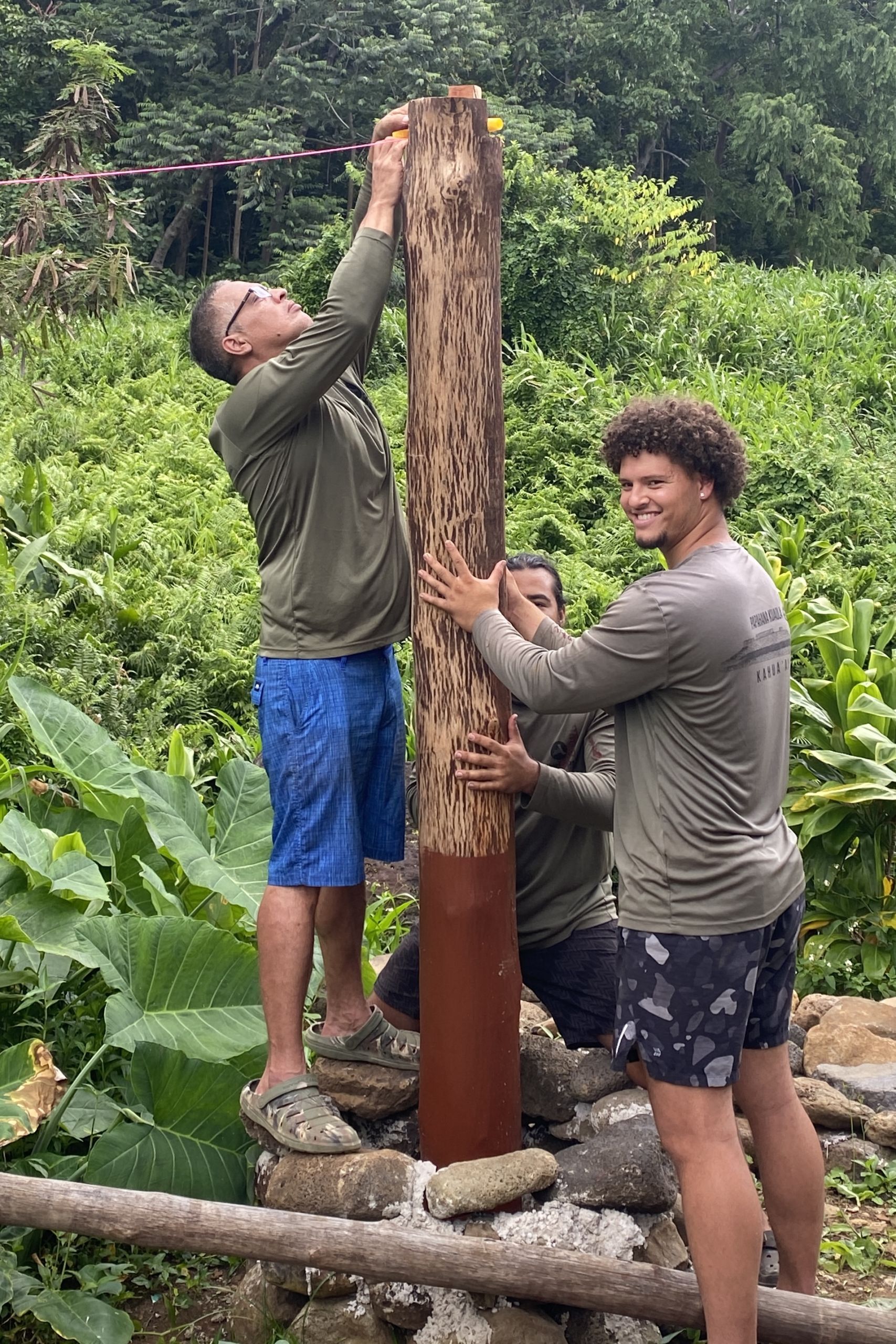
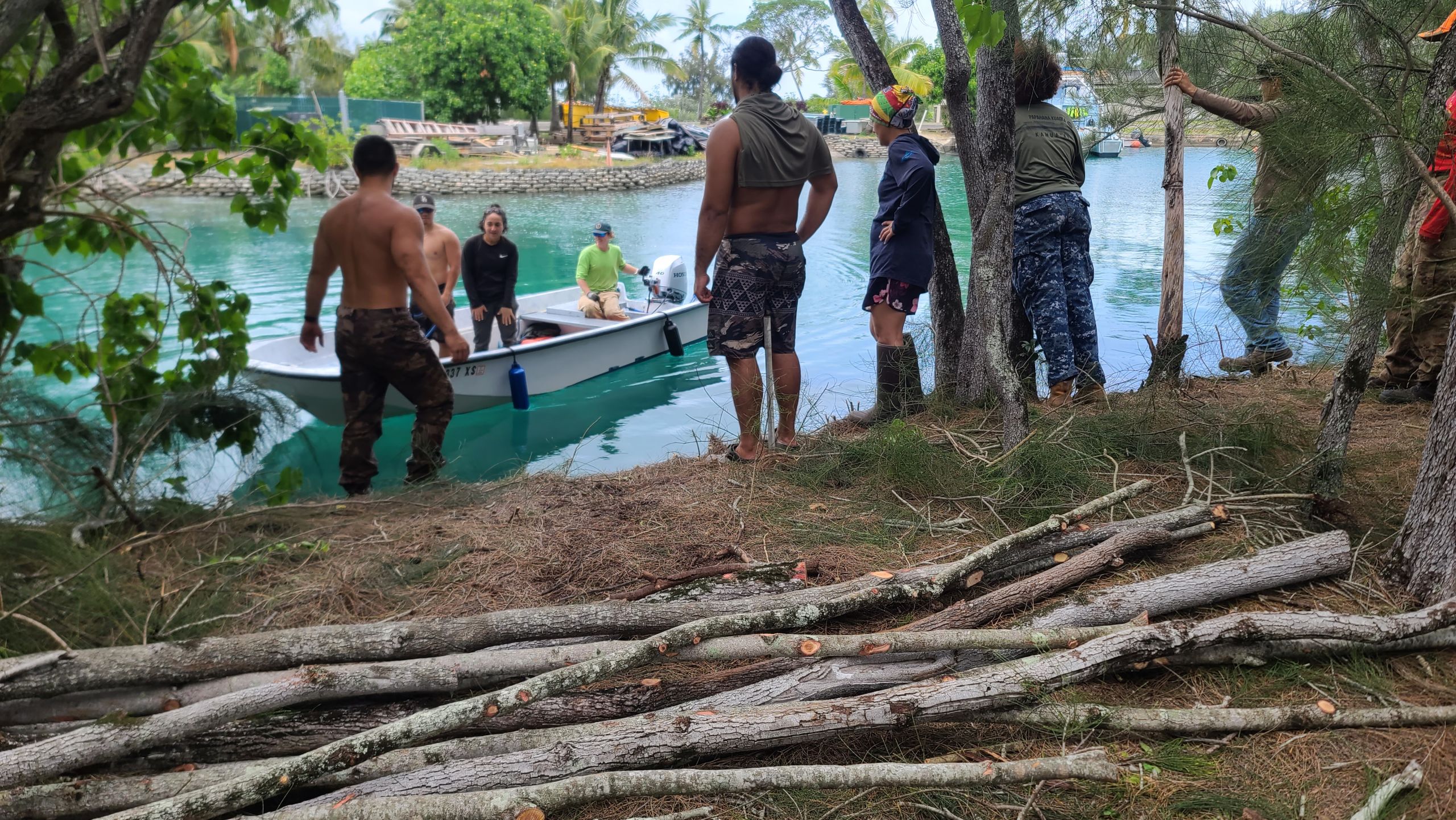
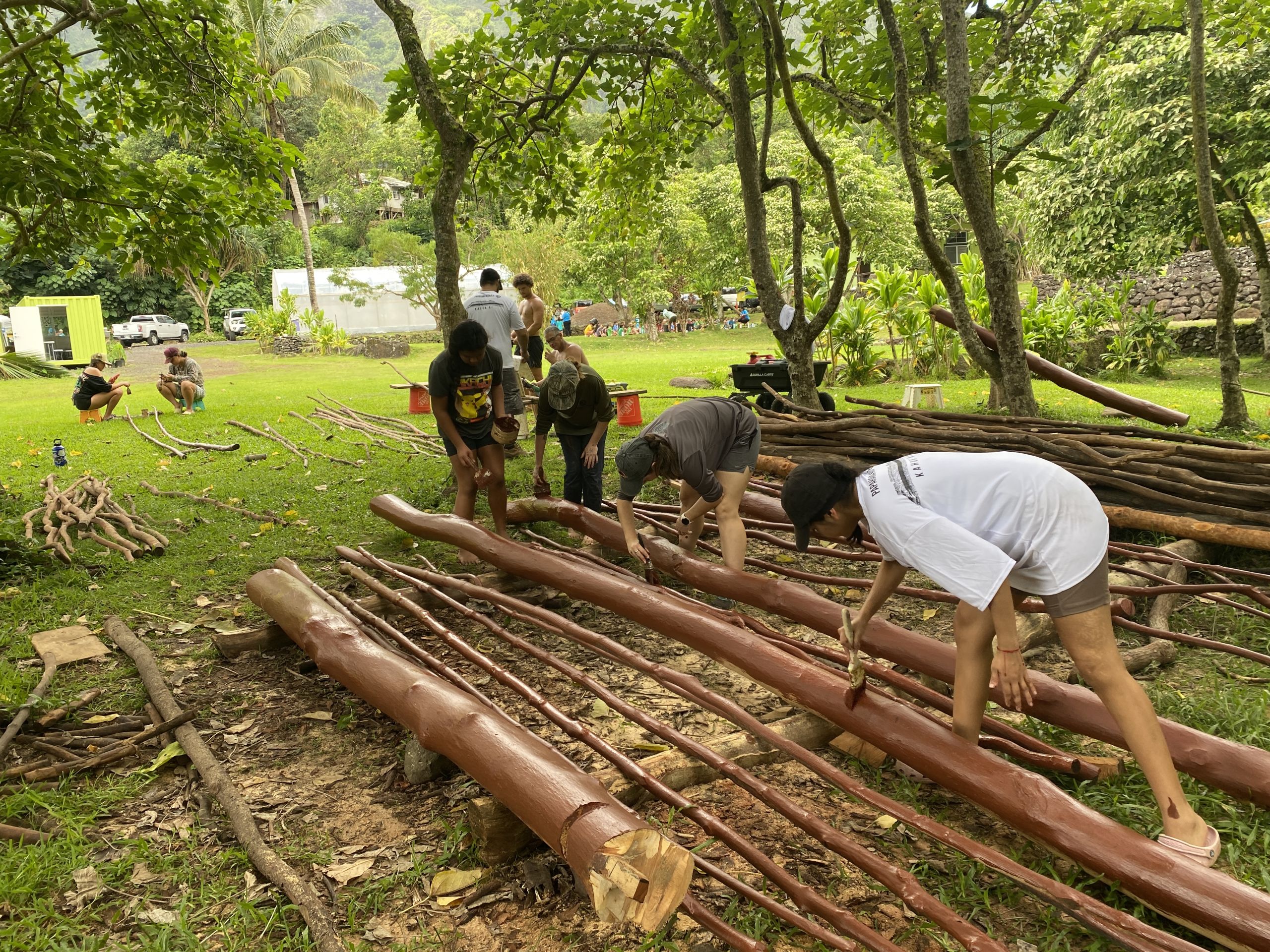
KUPU Hawaiʻi Youth Conservation Corps Summer Program was a dynamic team that assisted us with our hale project. As Hawaiʻi faces new environmental challenges every day, the KUPU program provides an opportunity for the youth of Hawaiʻi to make positive change and contribute to our islands’ long-term sustainability!
Final Touches
Just adding the final touches to our hale.
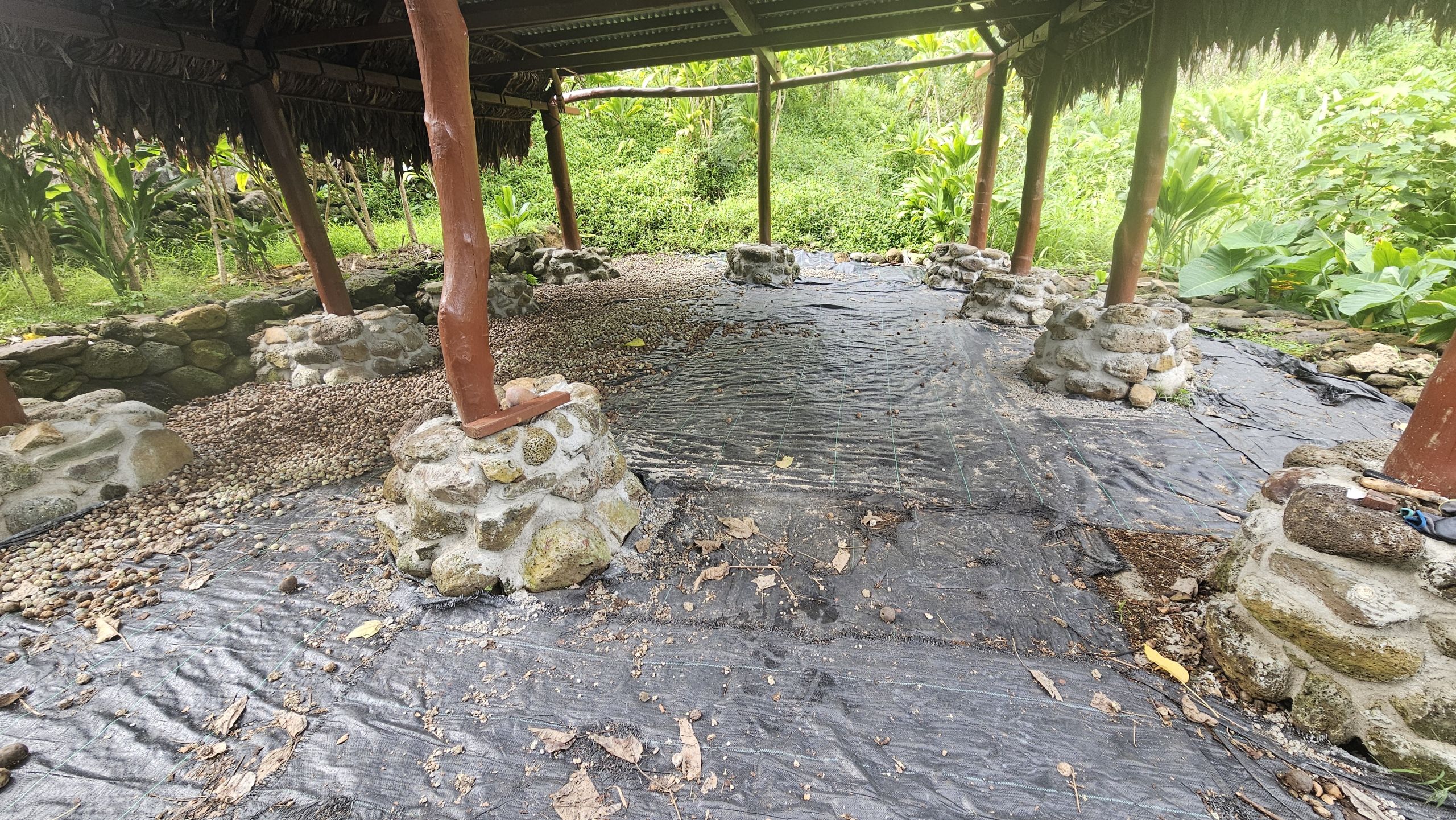
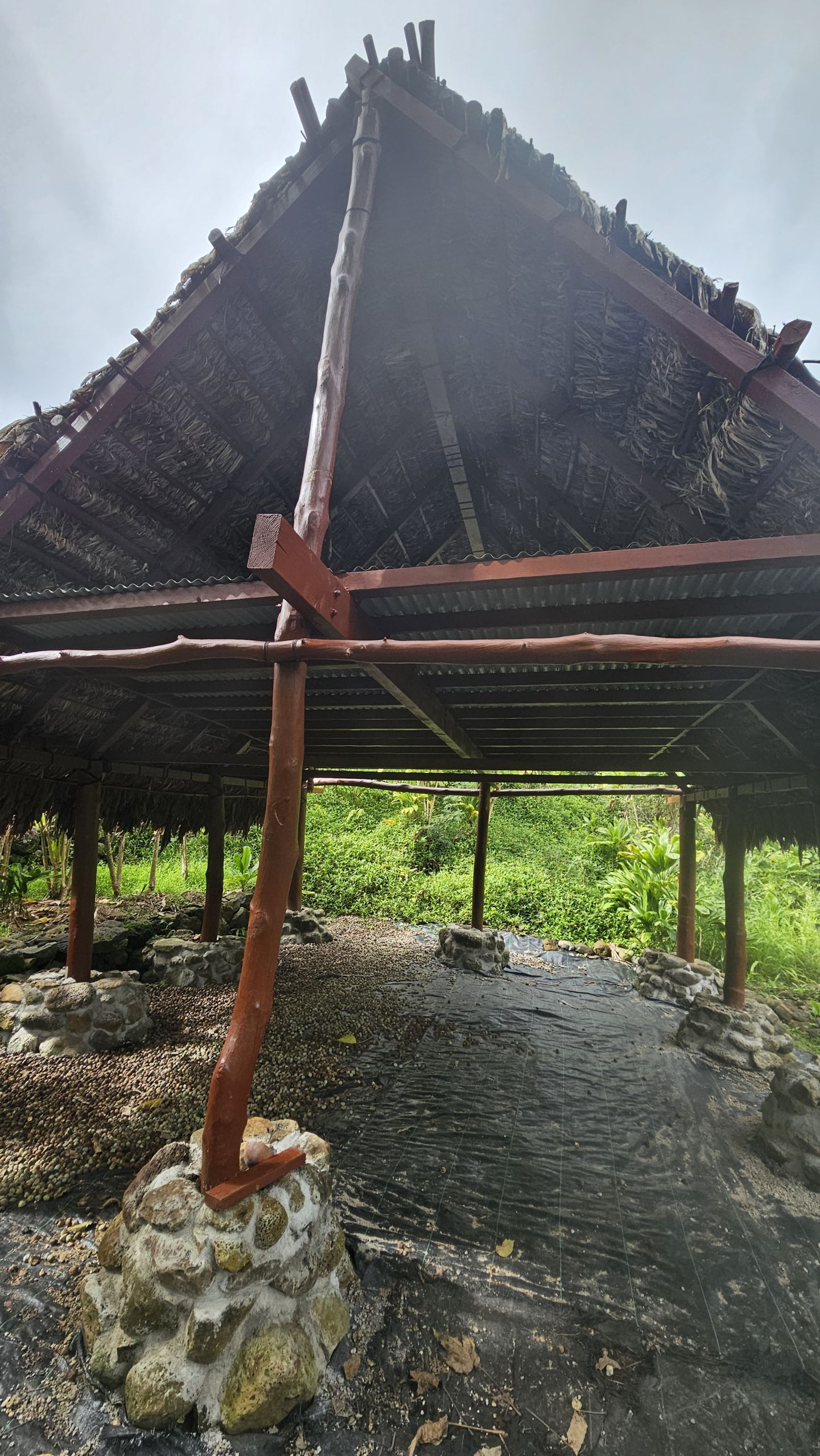
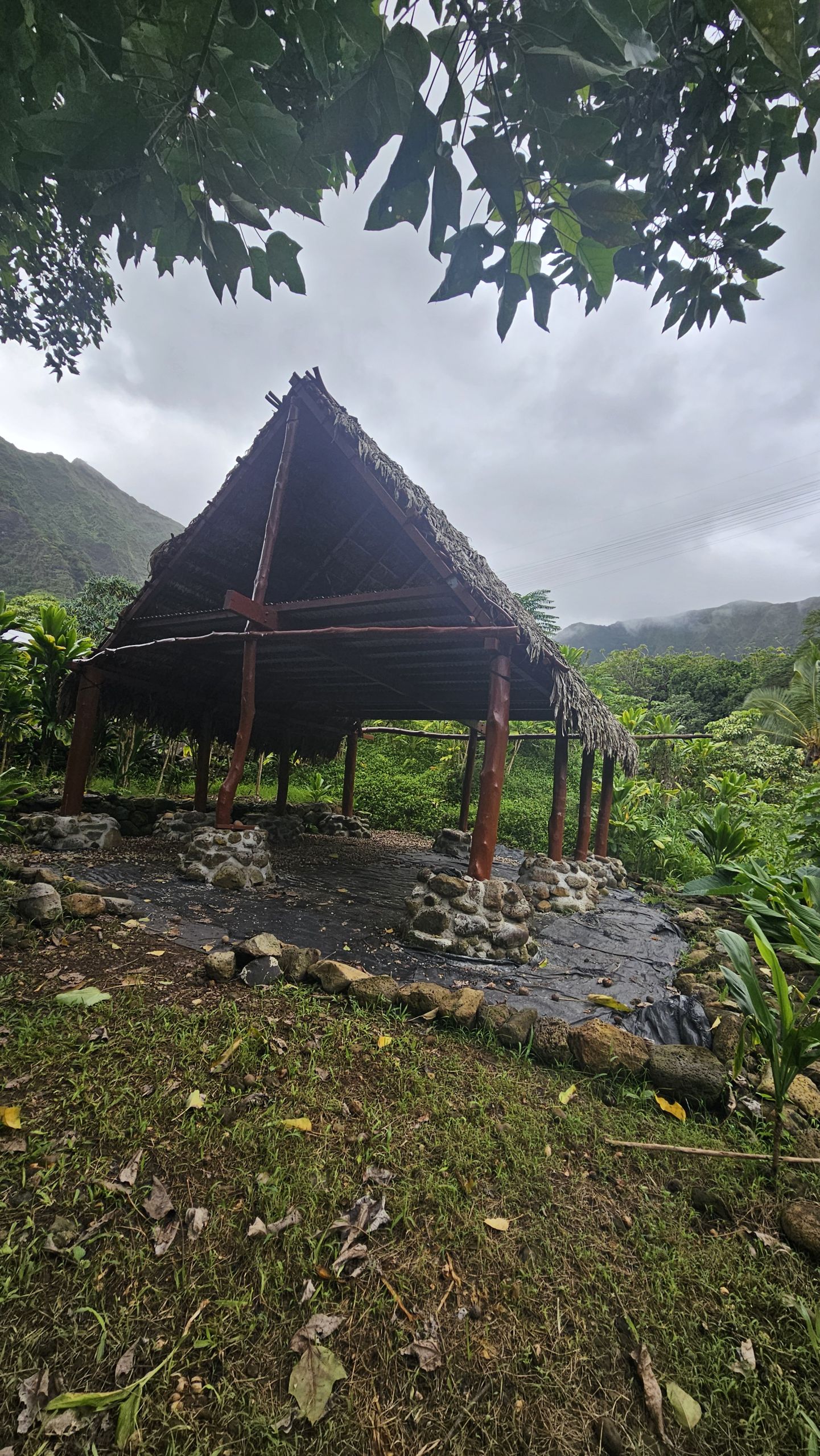
KUPU Hawaiʻi Youth Conservation Corps Summer Program was a dynamic team that assisted us with our hale project. As Hawaiʻi faces new environmental challenges every day, the KUPU program provides an opportunity for the youth of Hawaiʻi to make positive change and contribute to our islands’ long-term sustainability!



